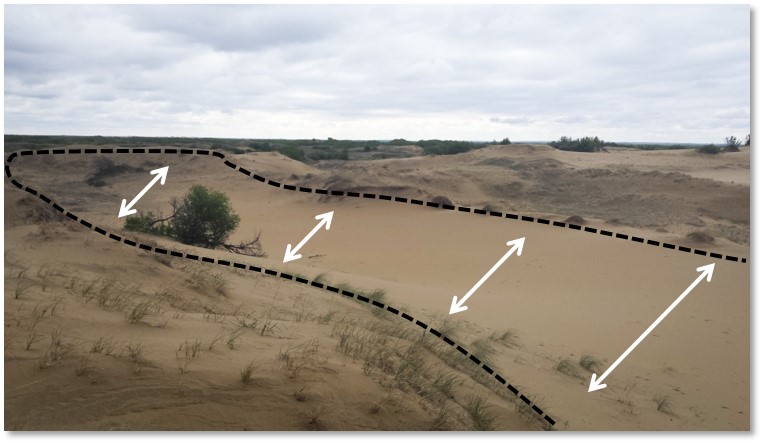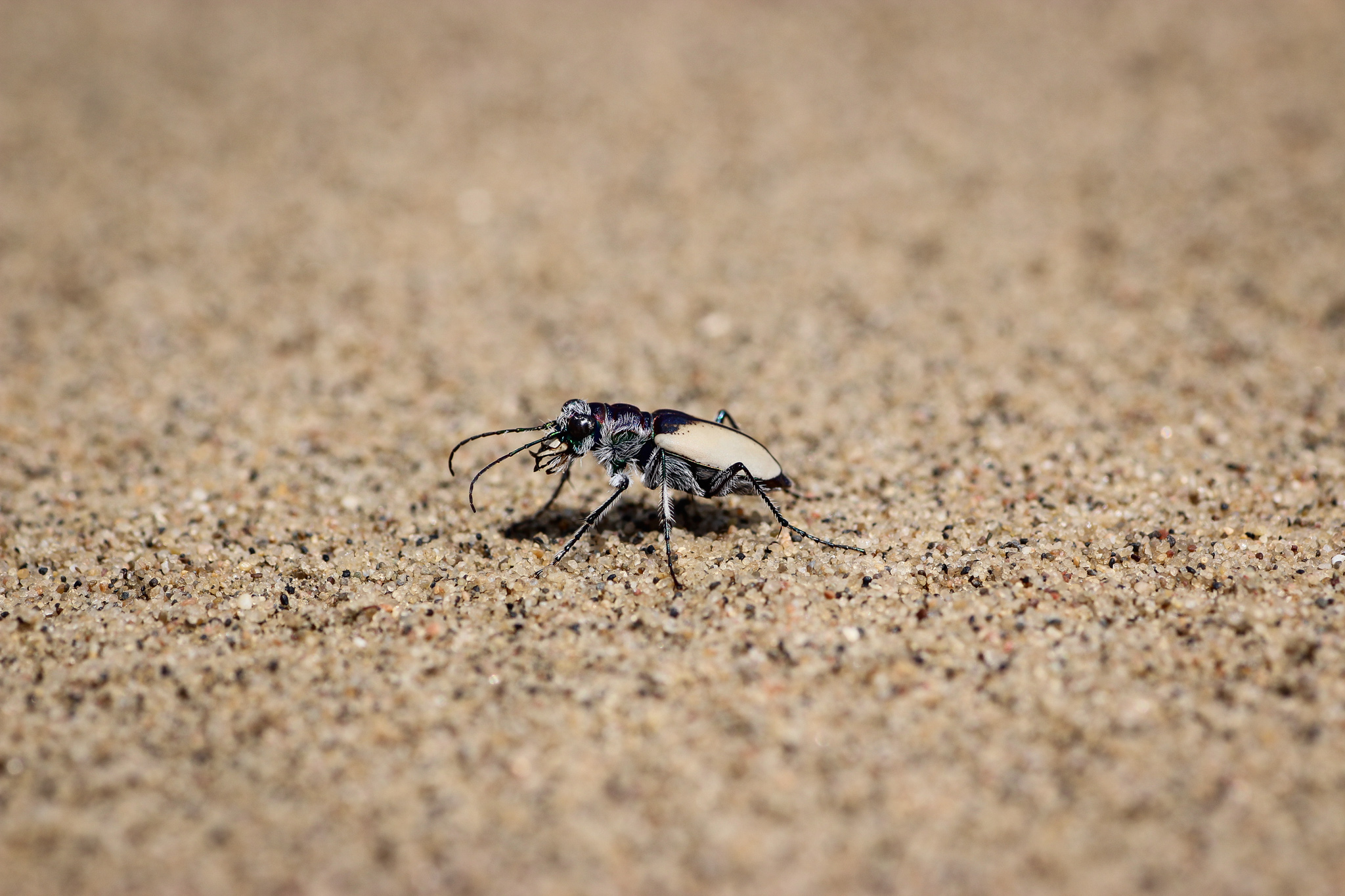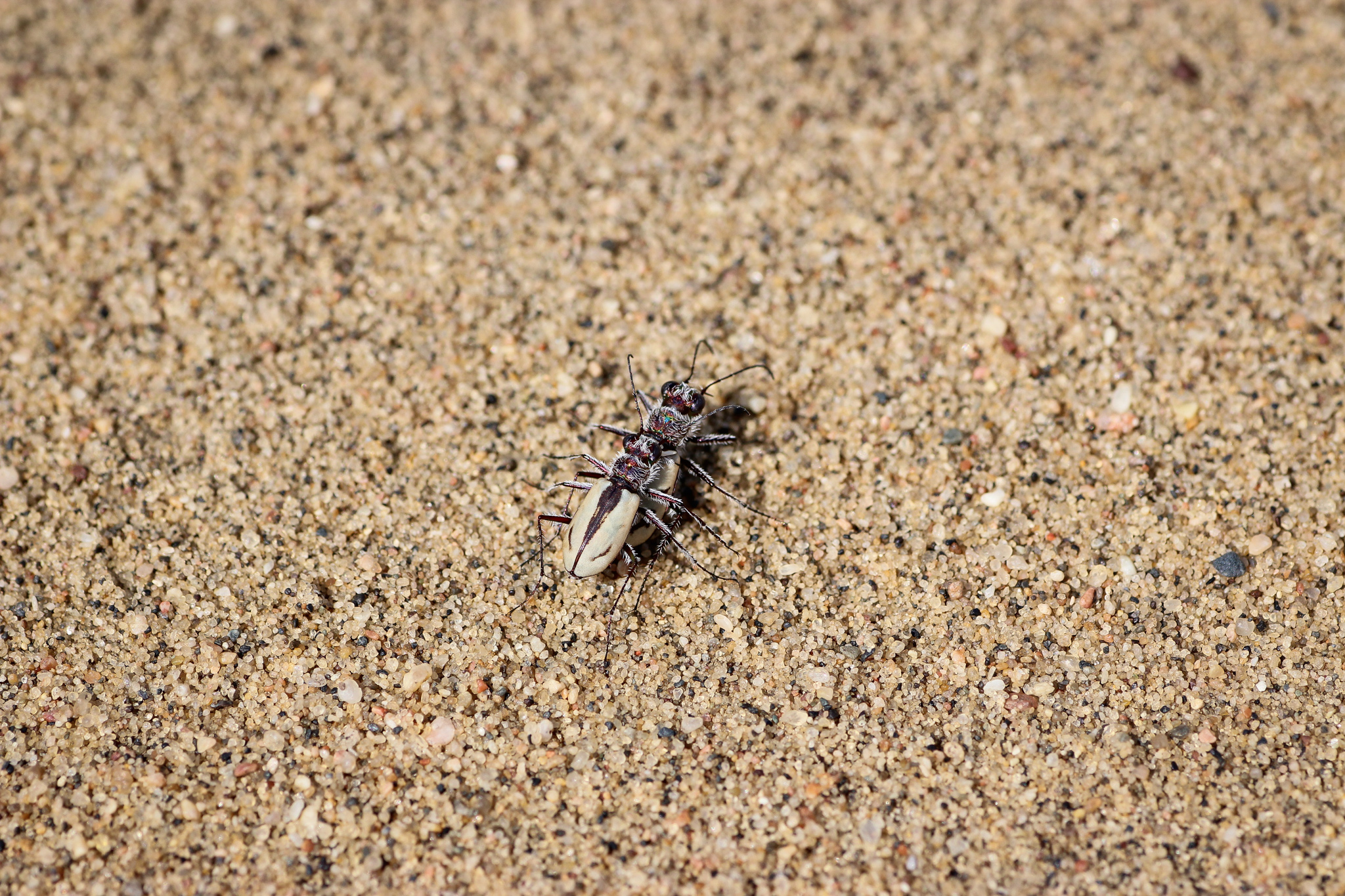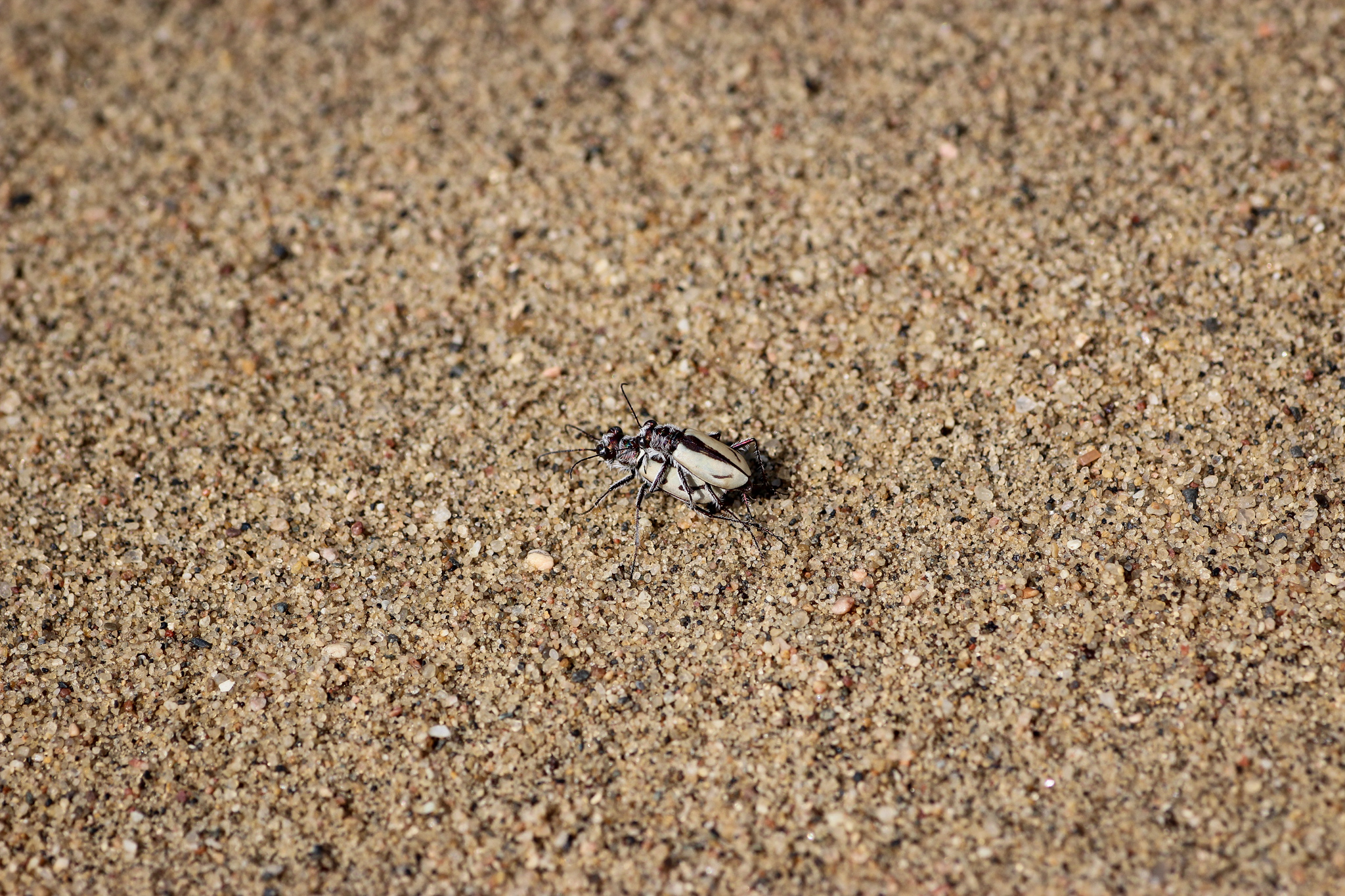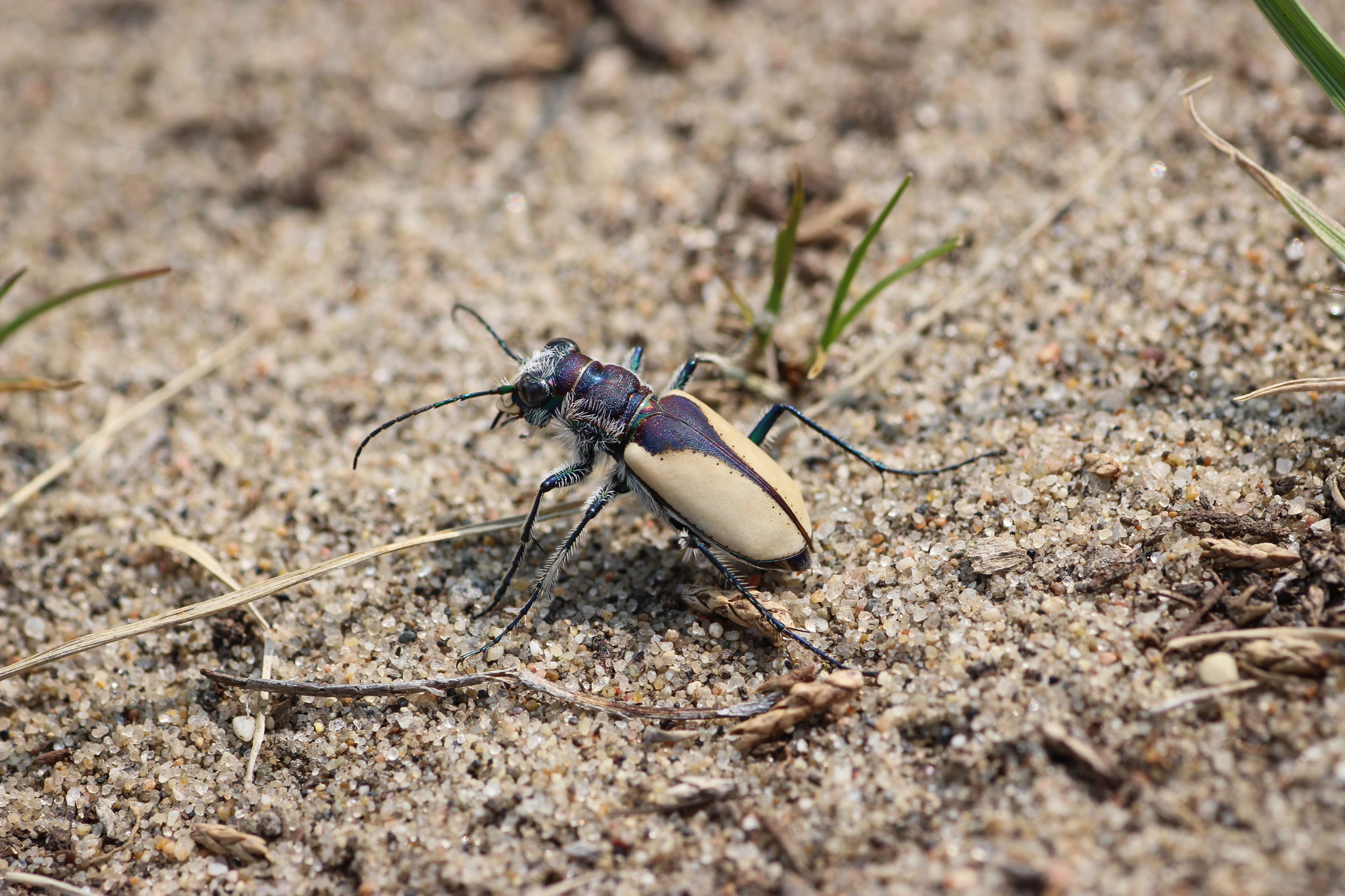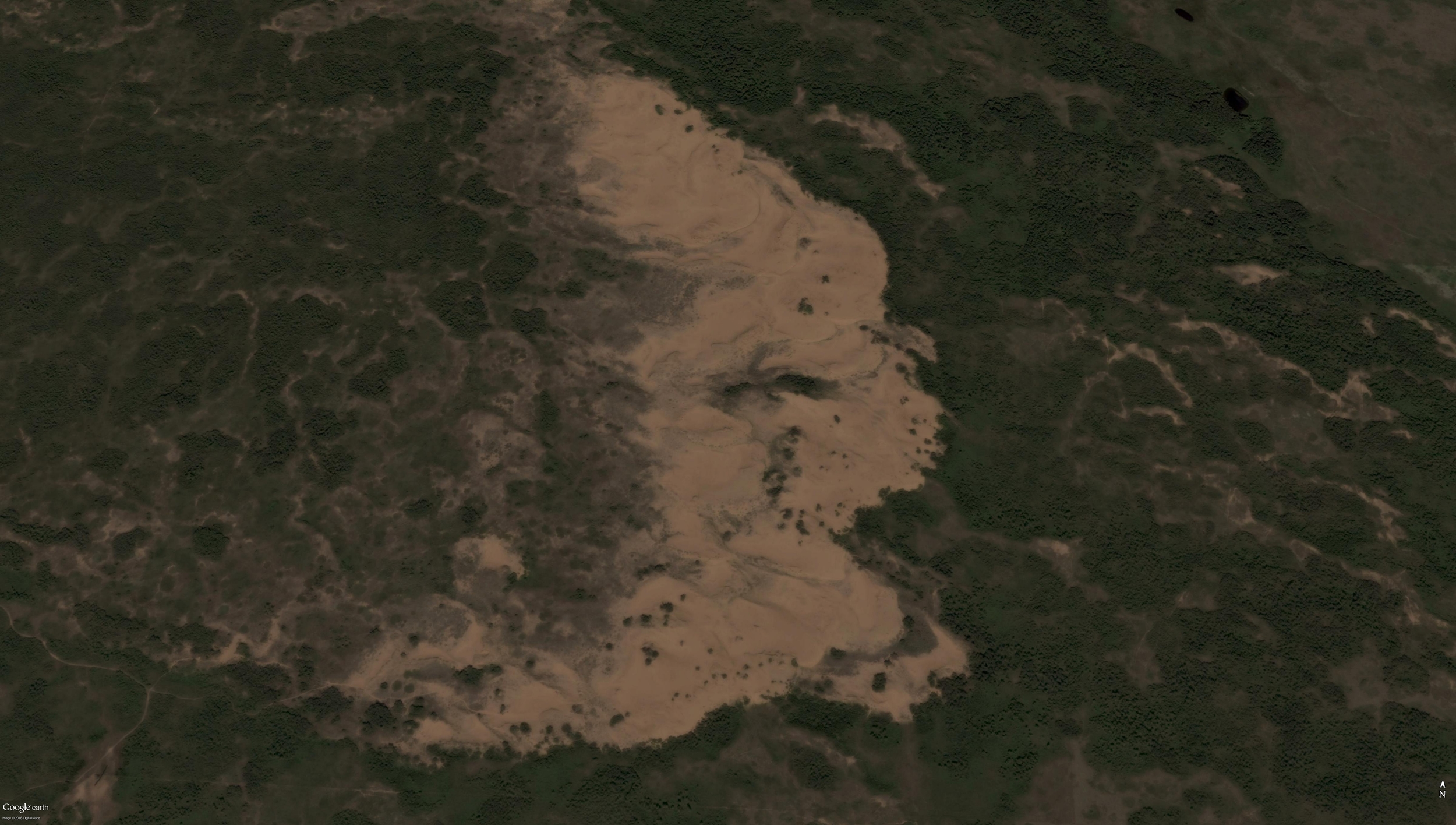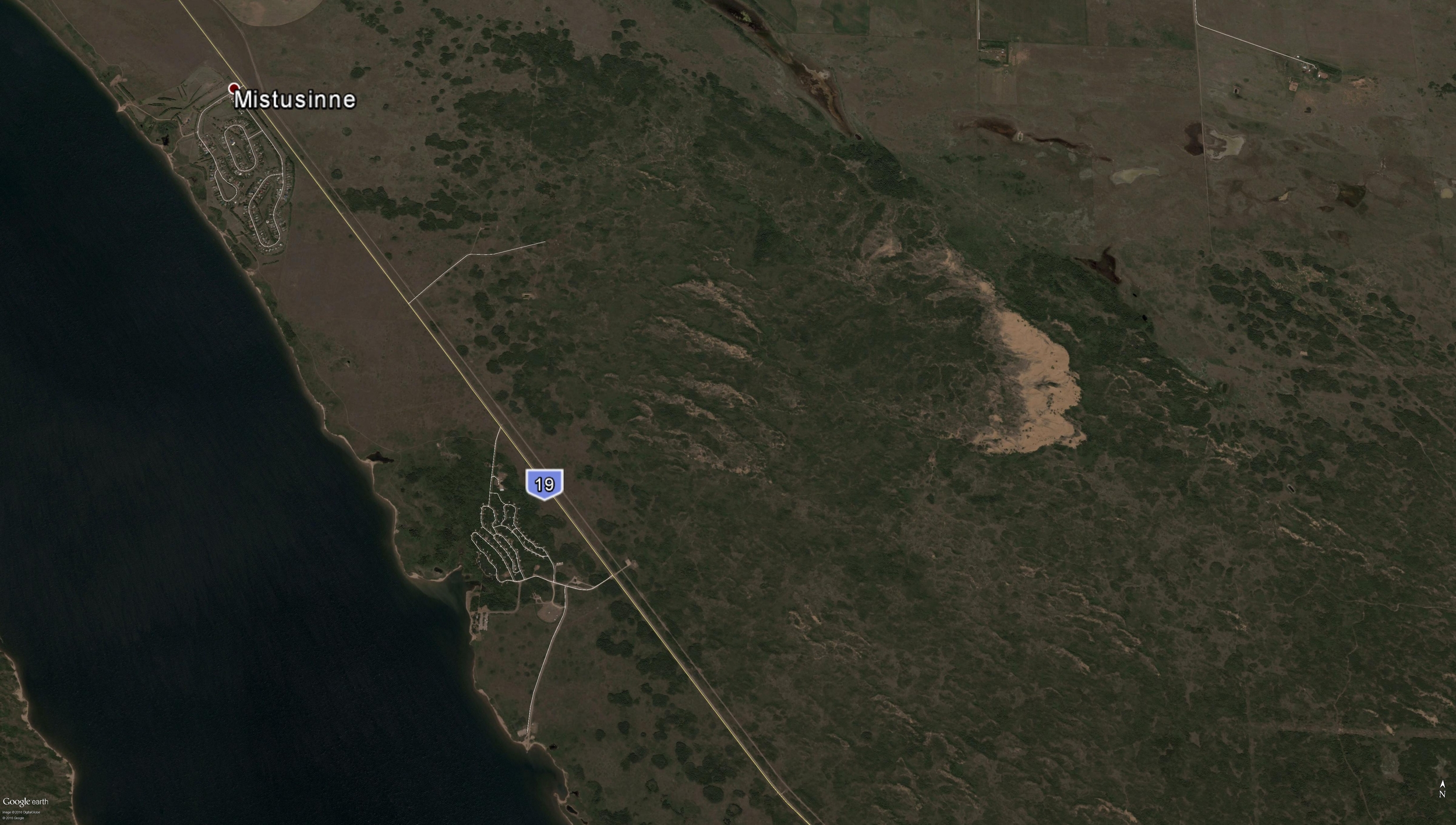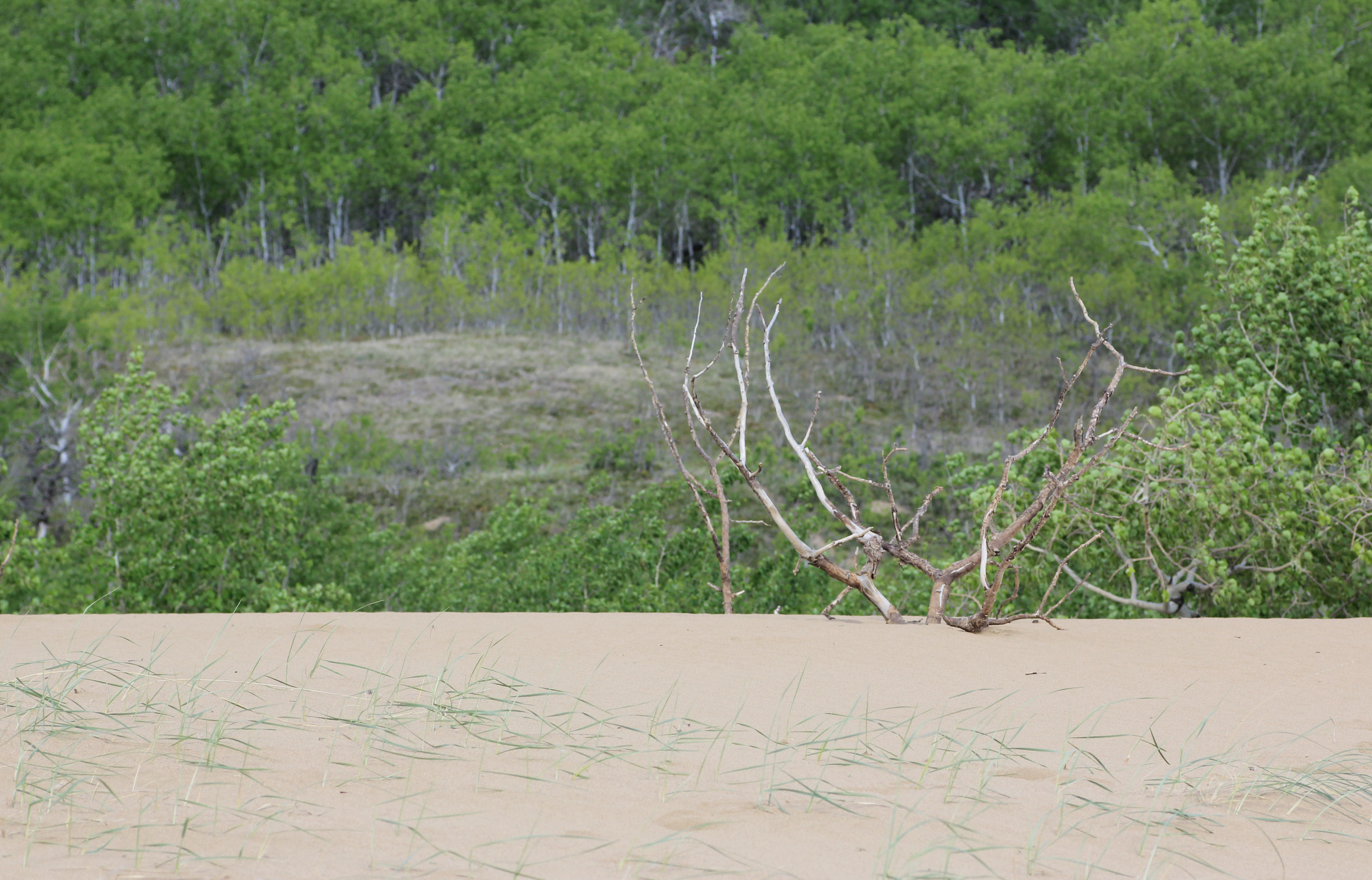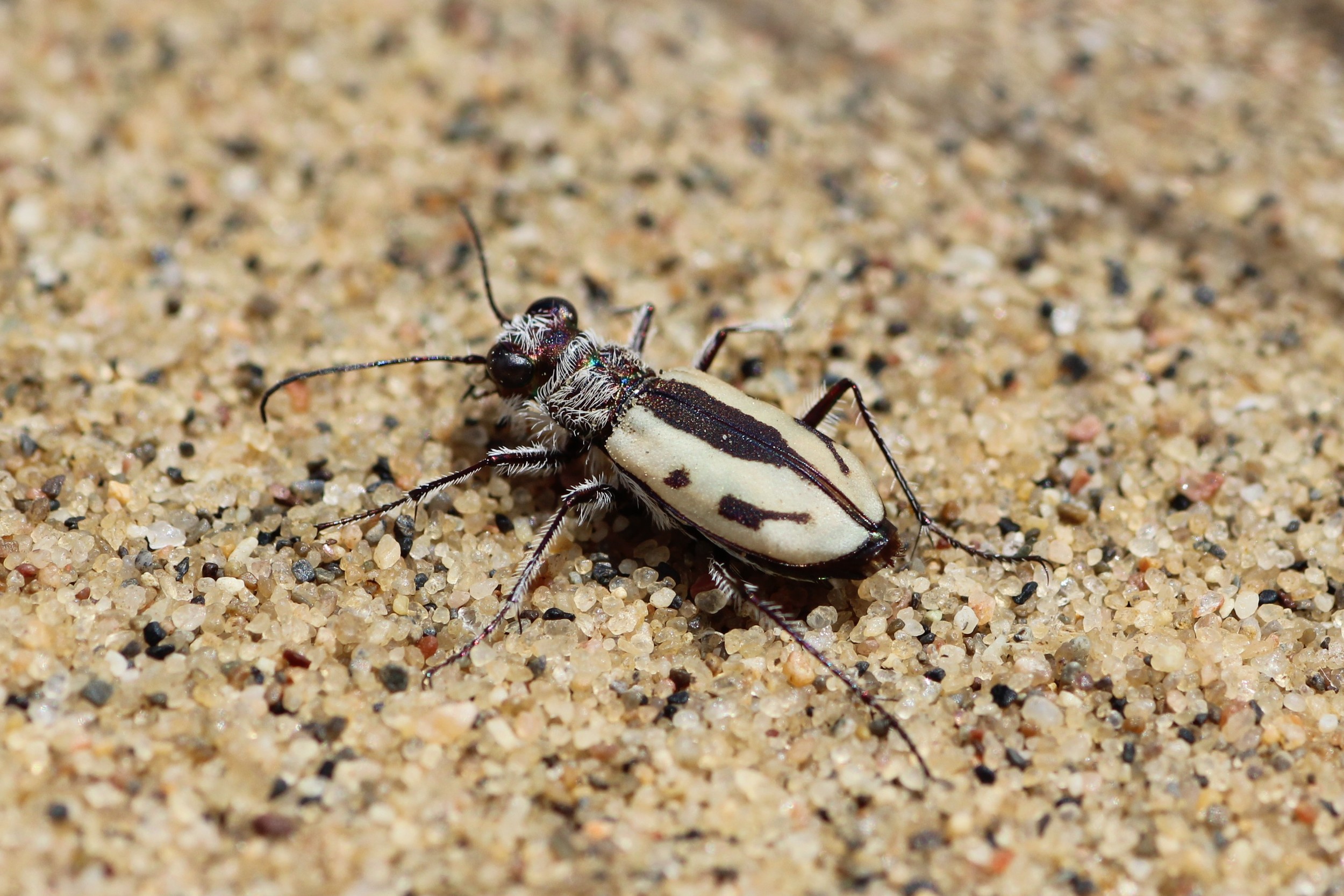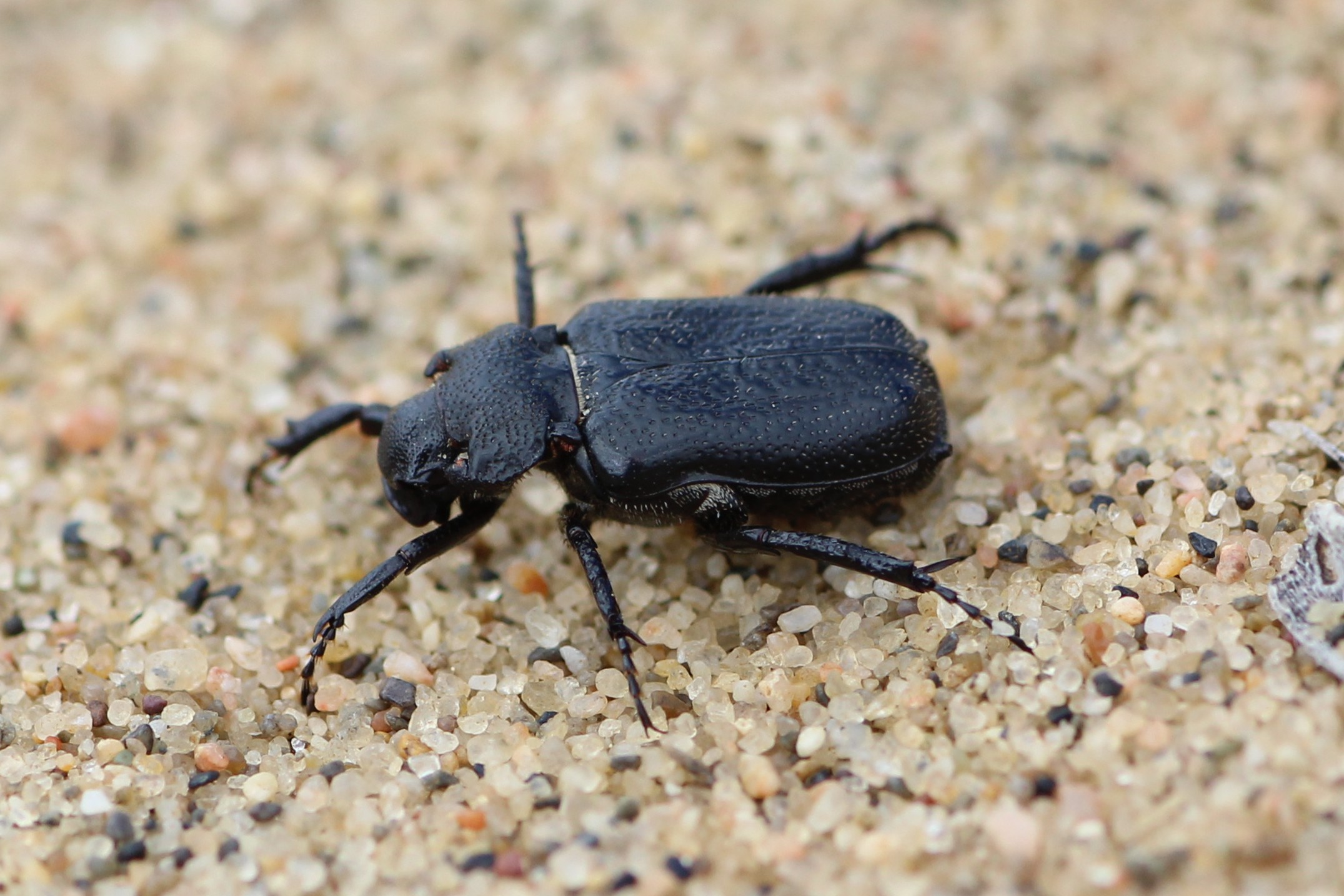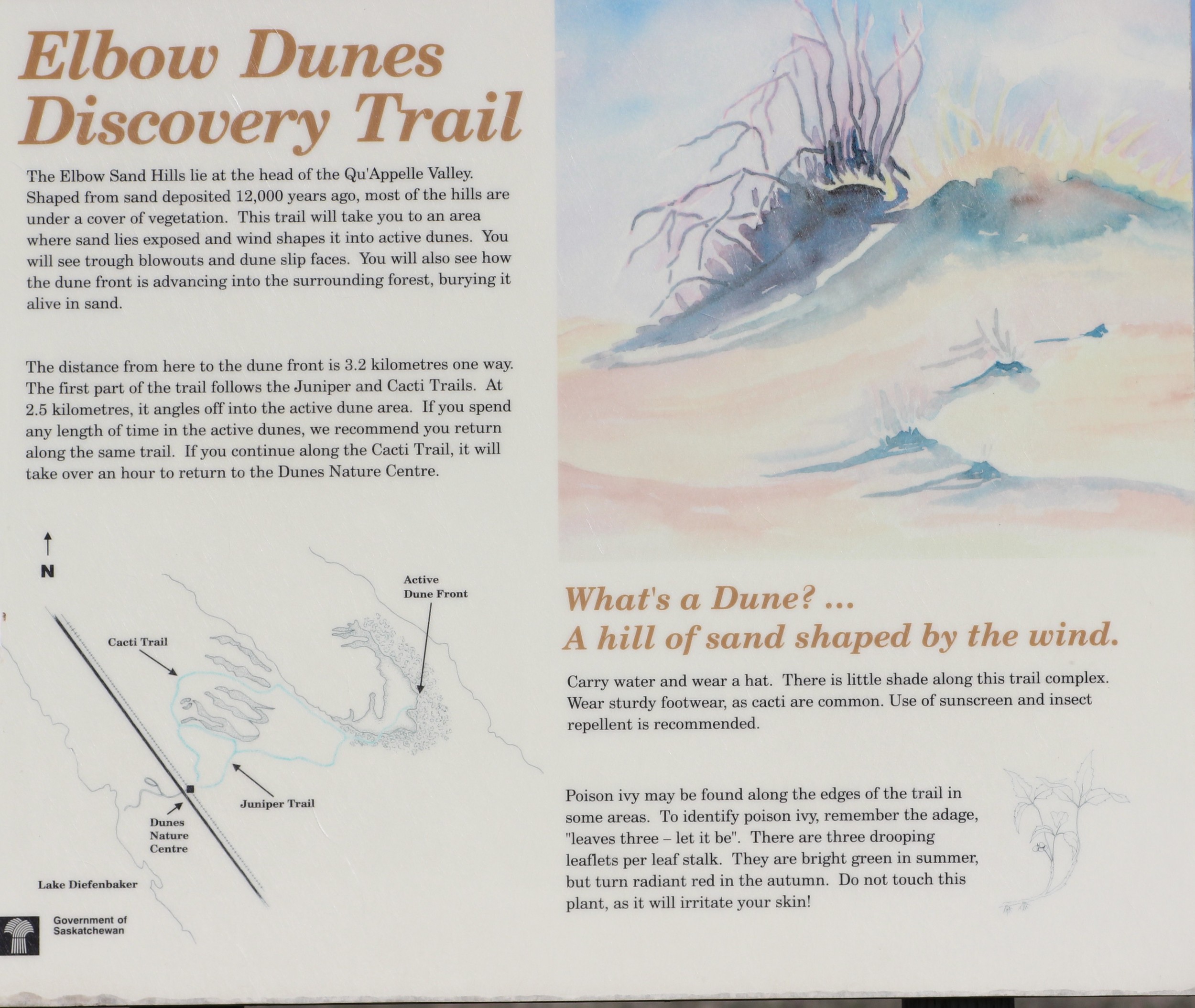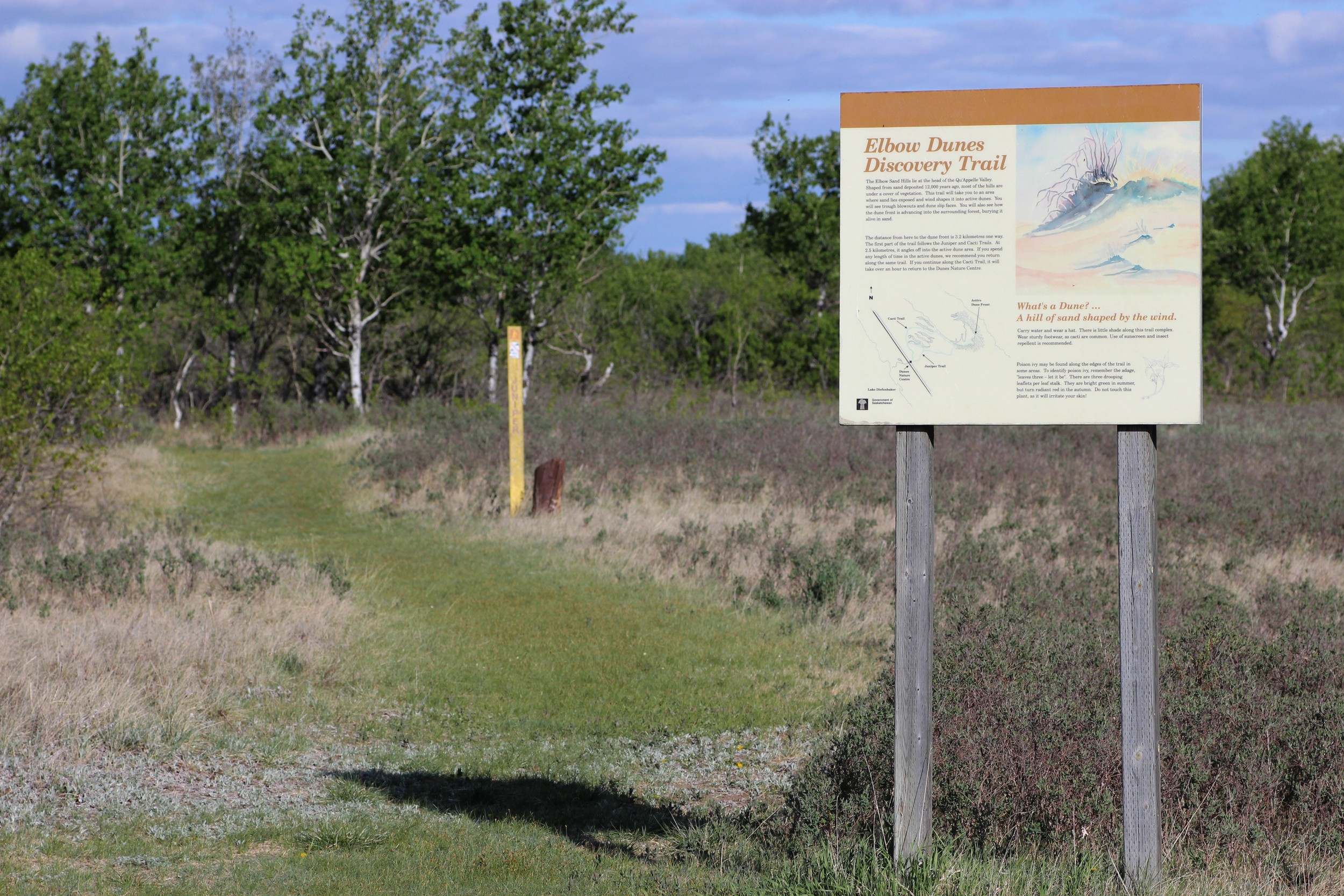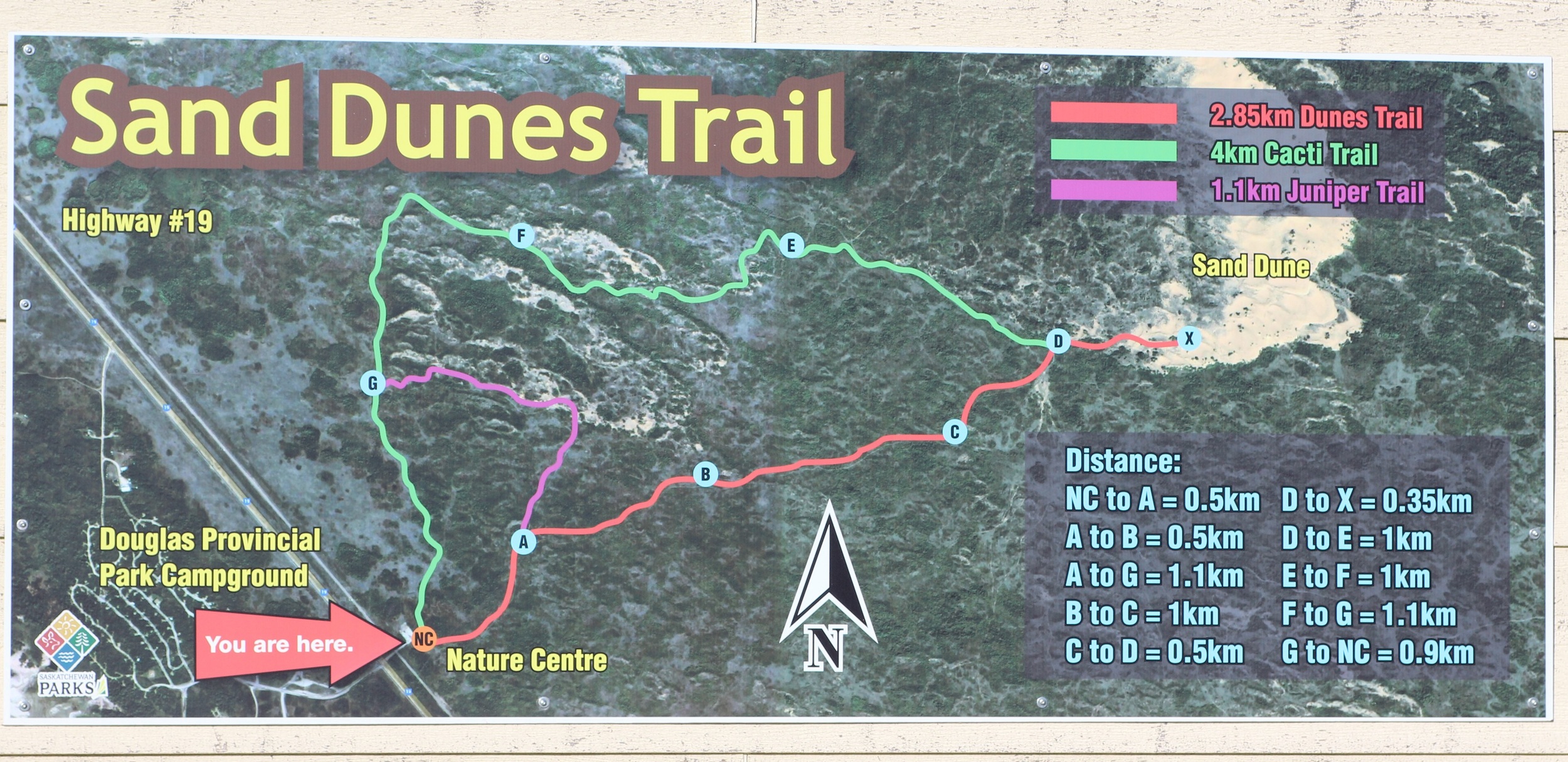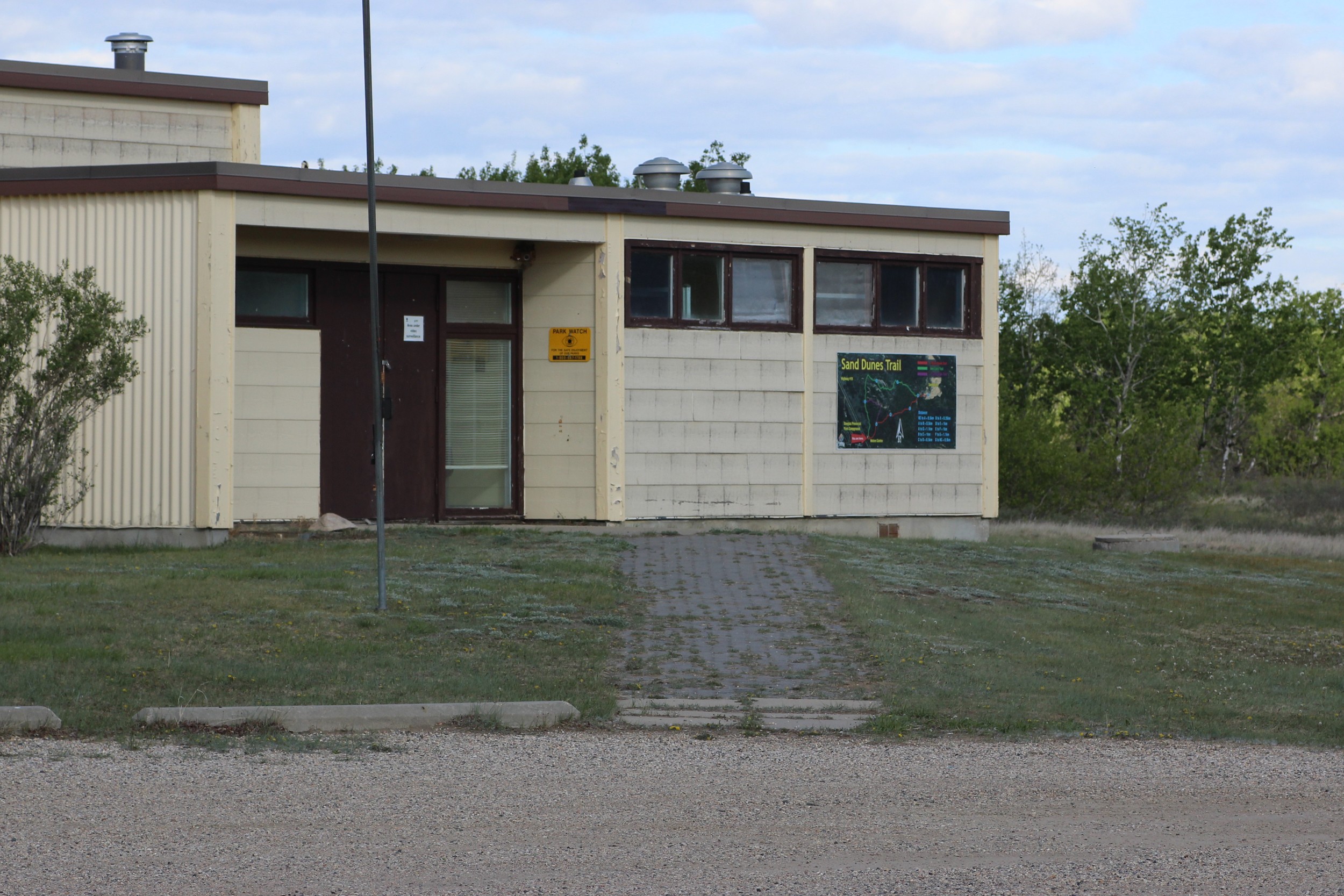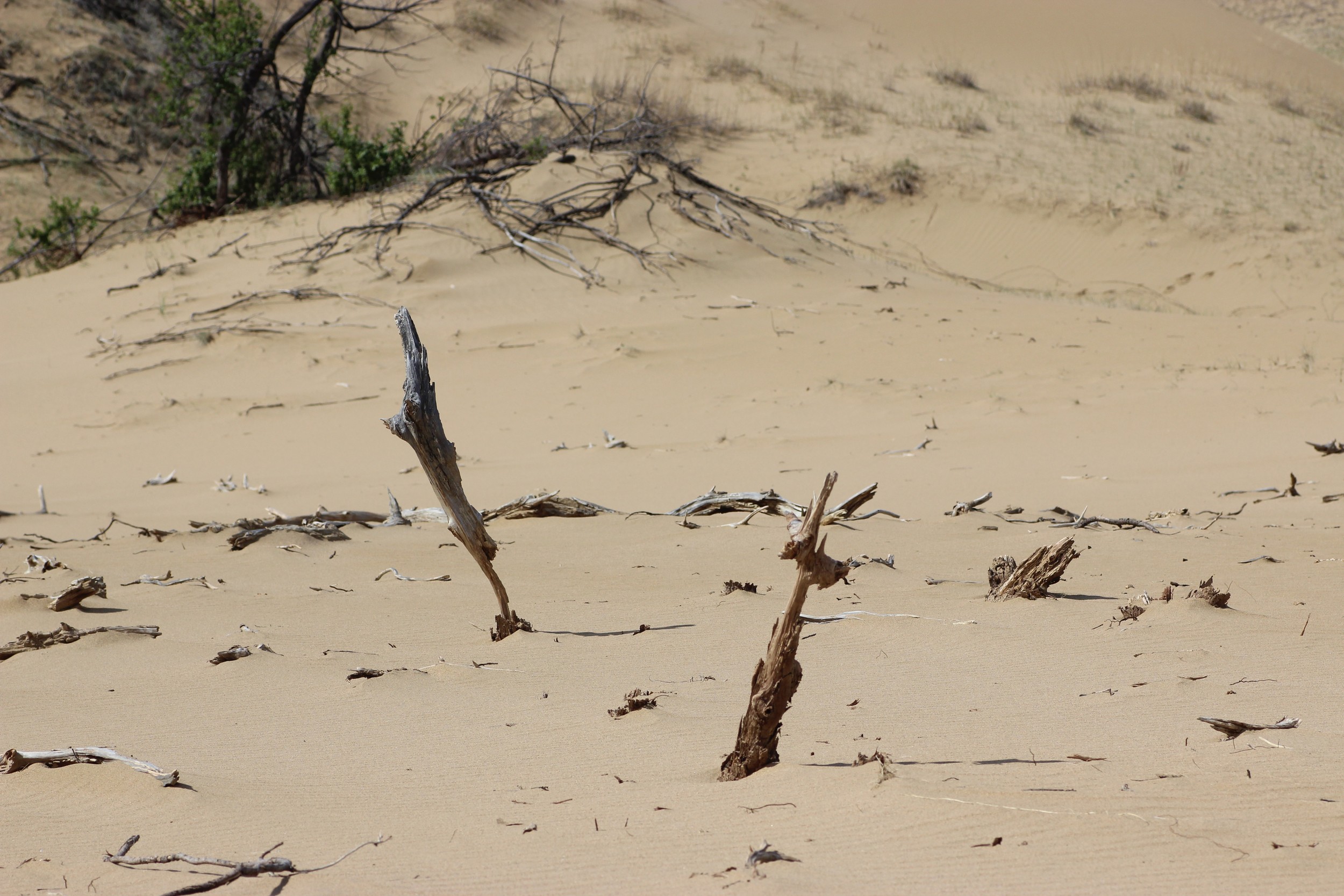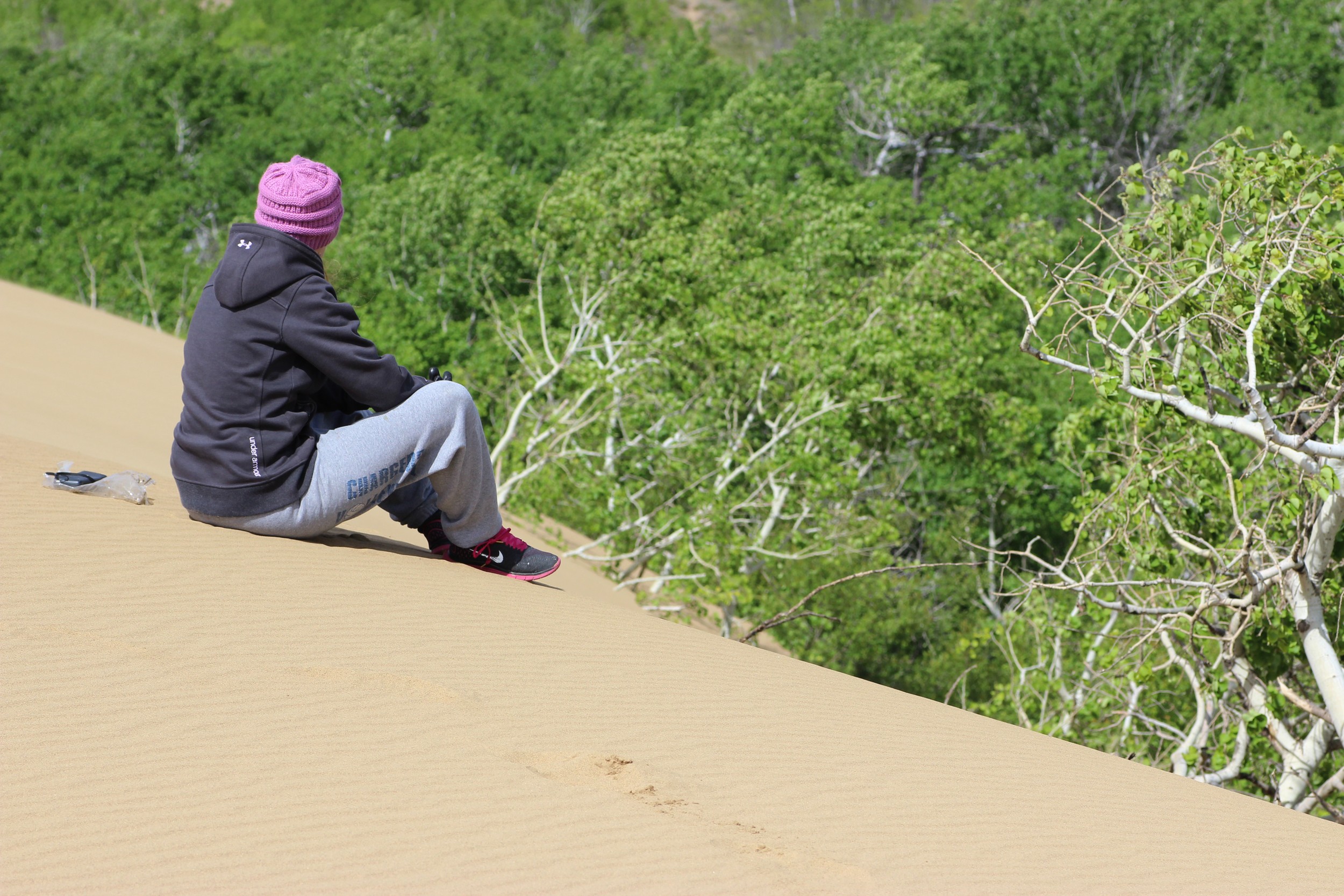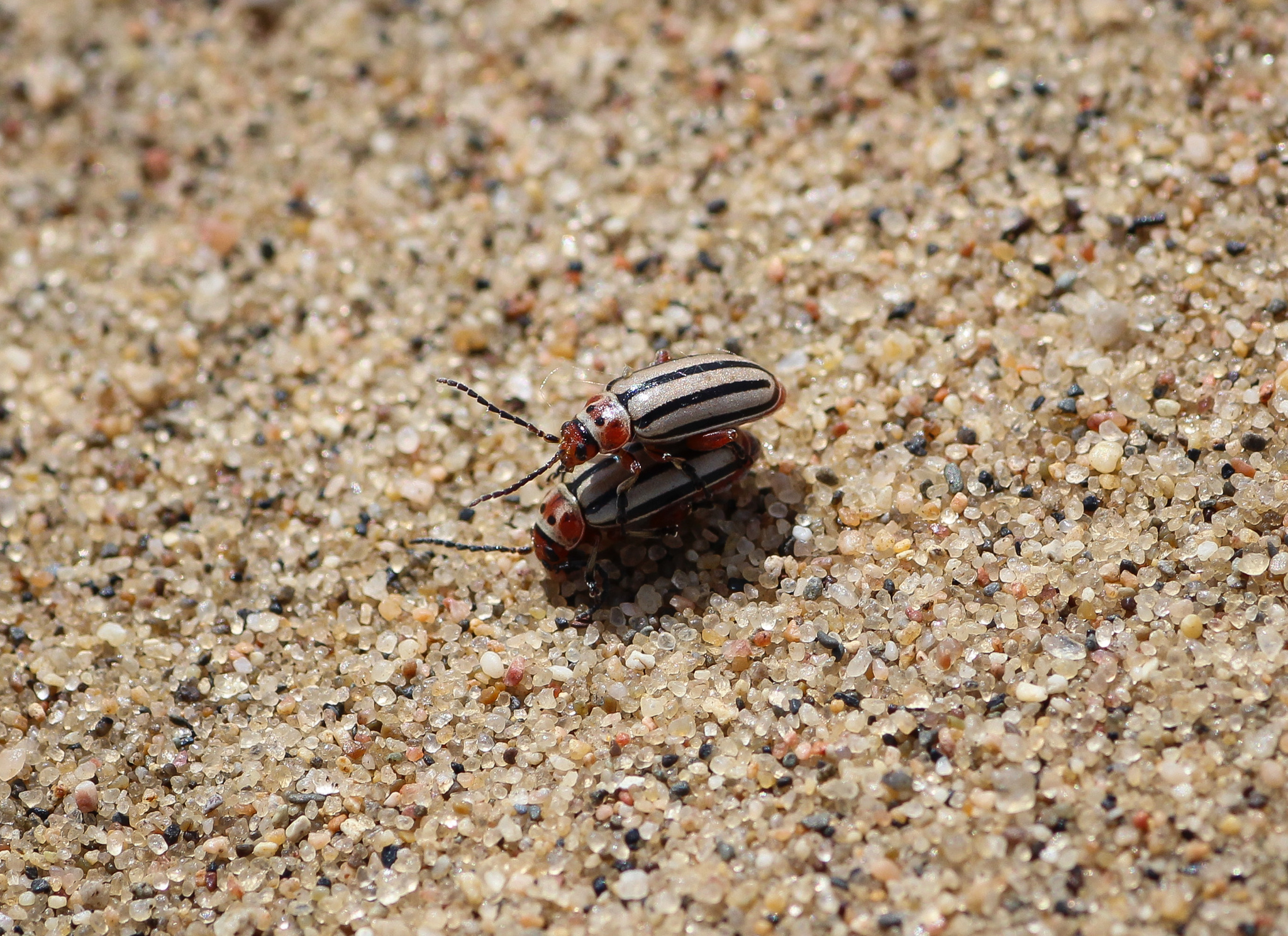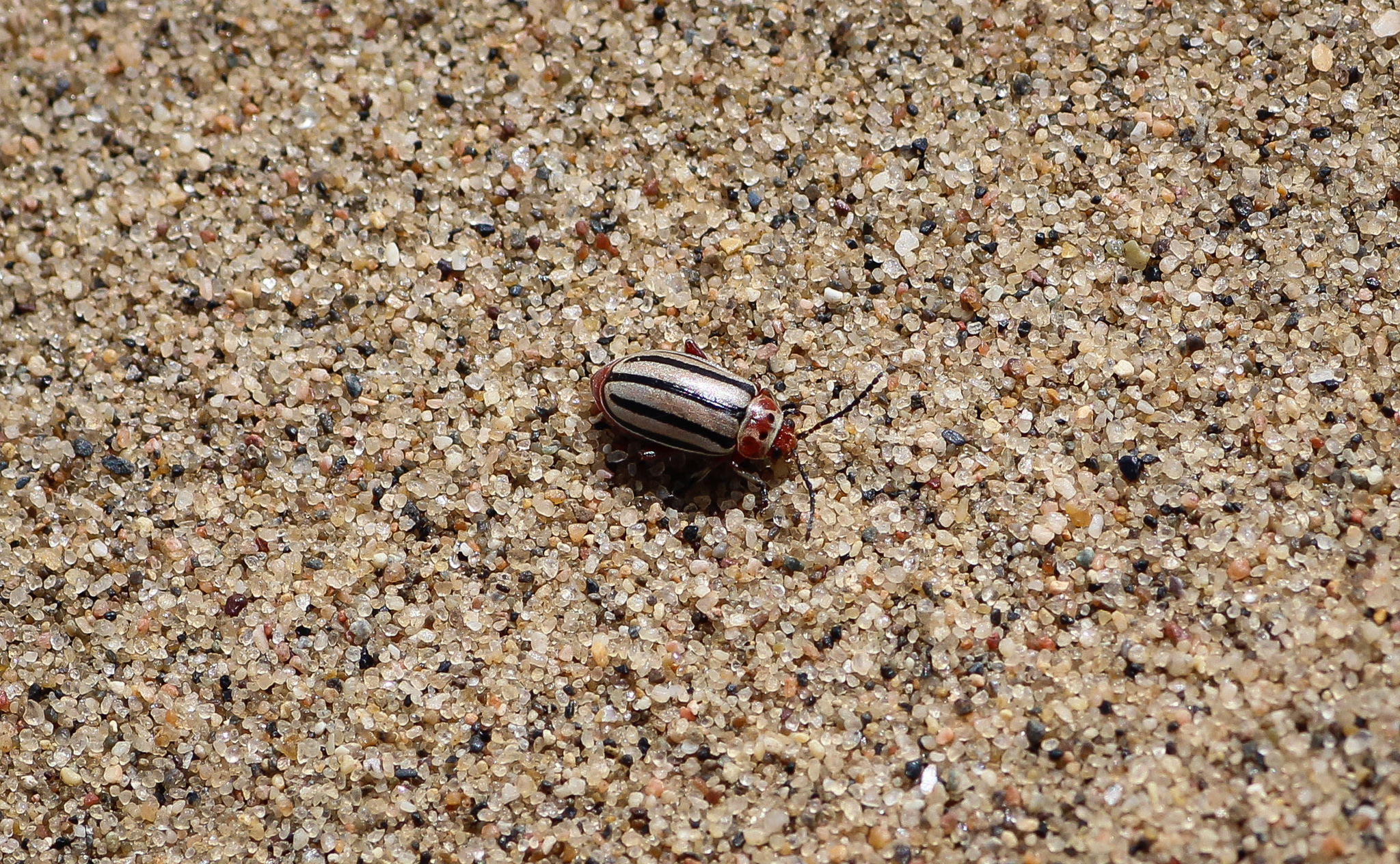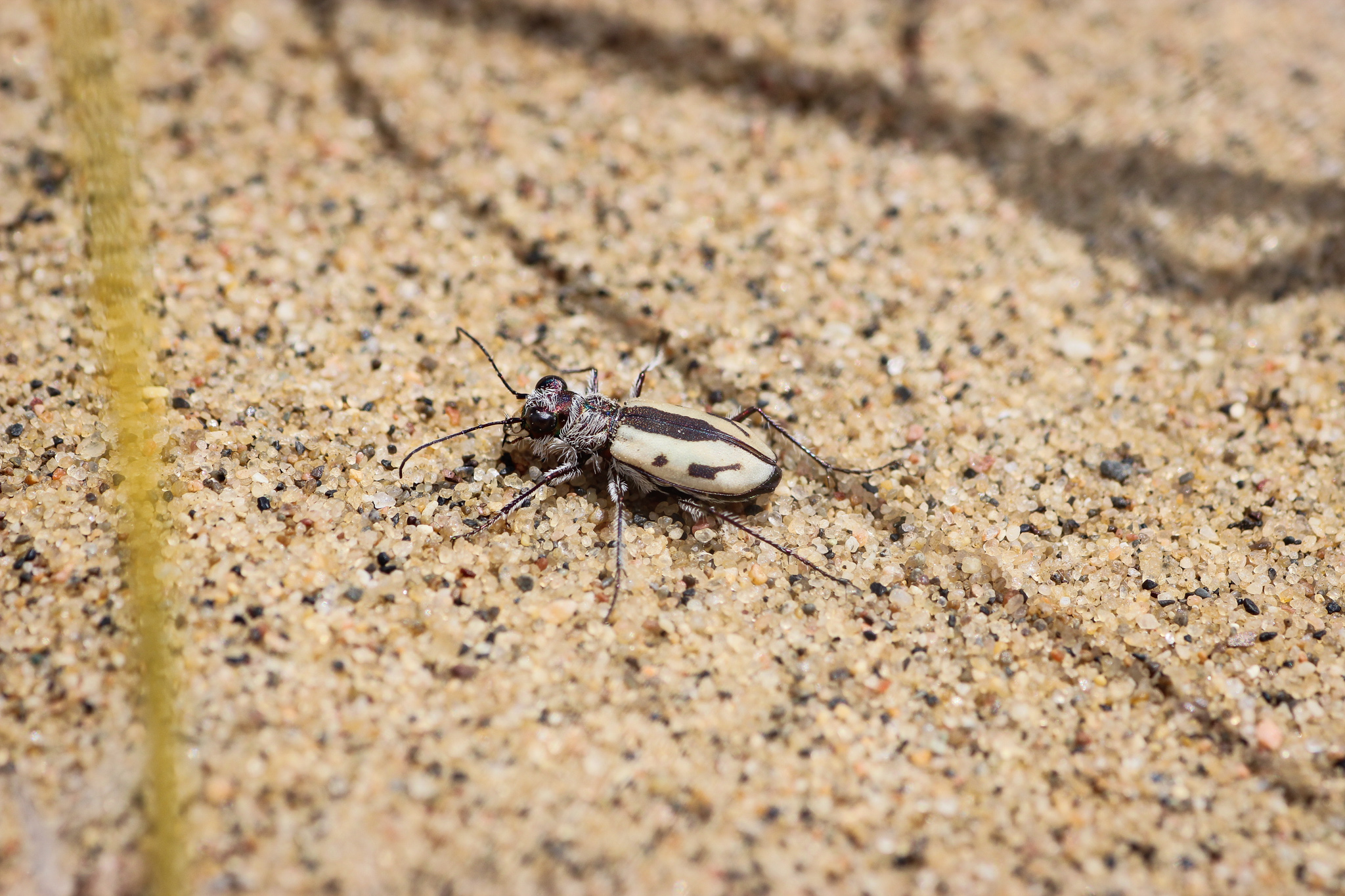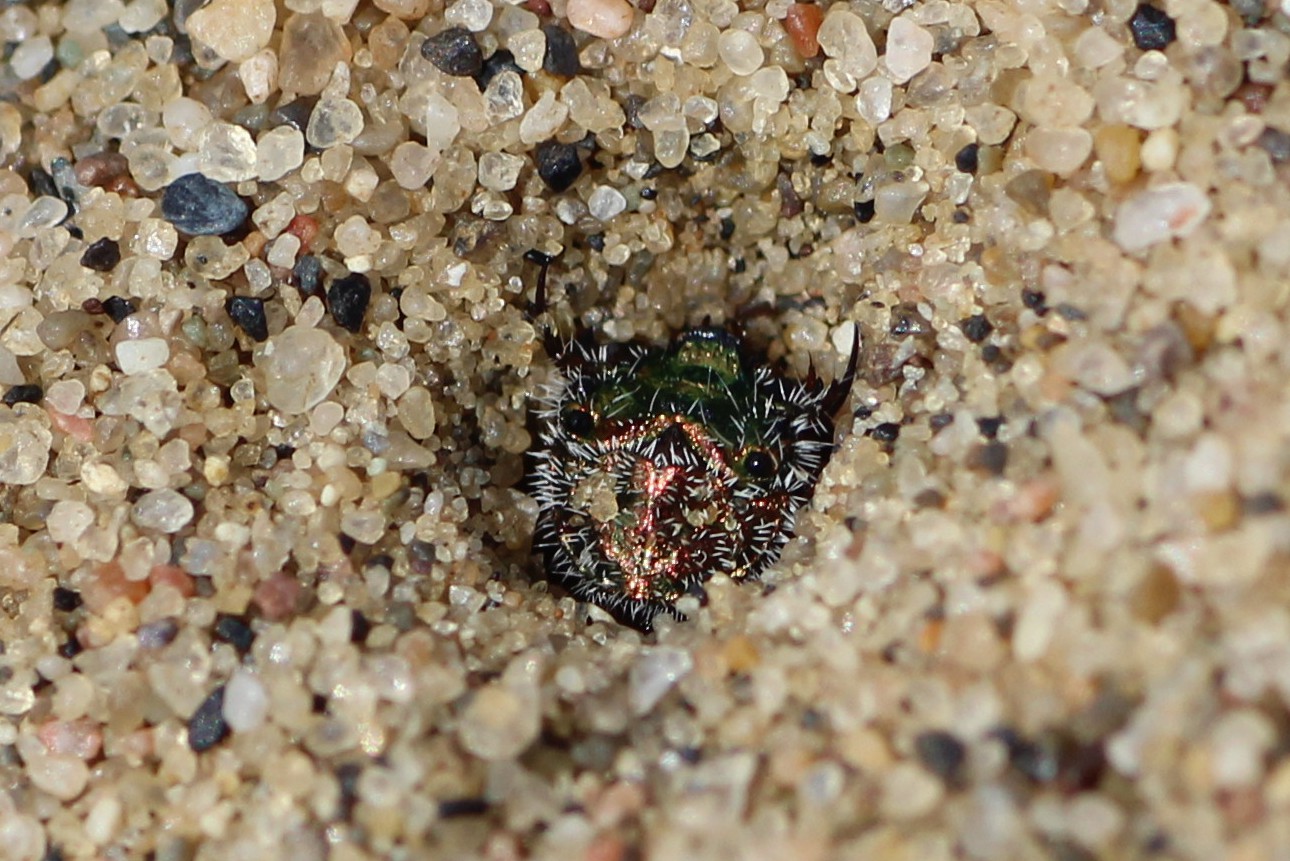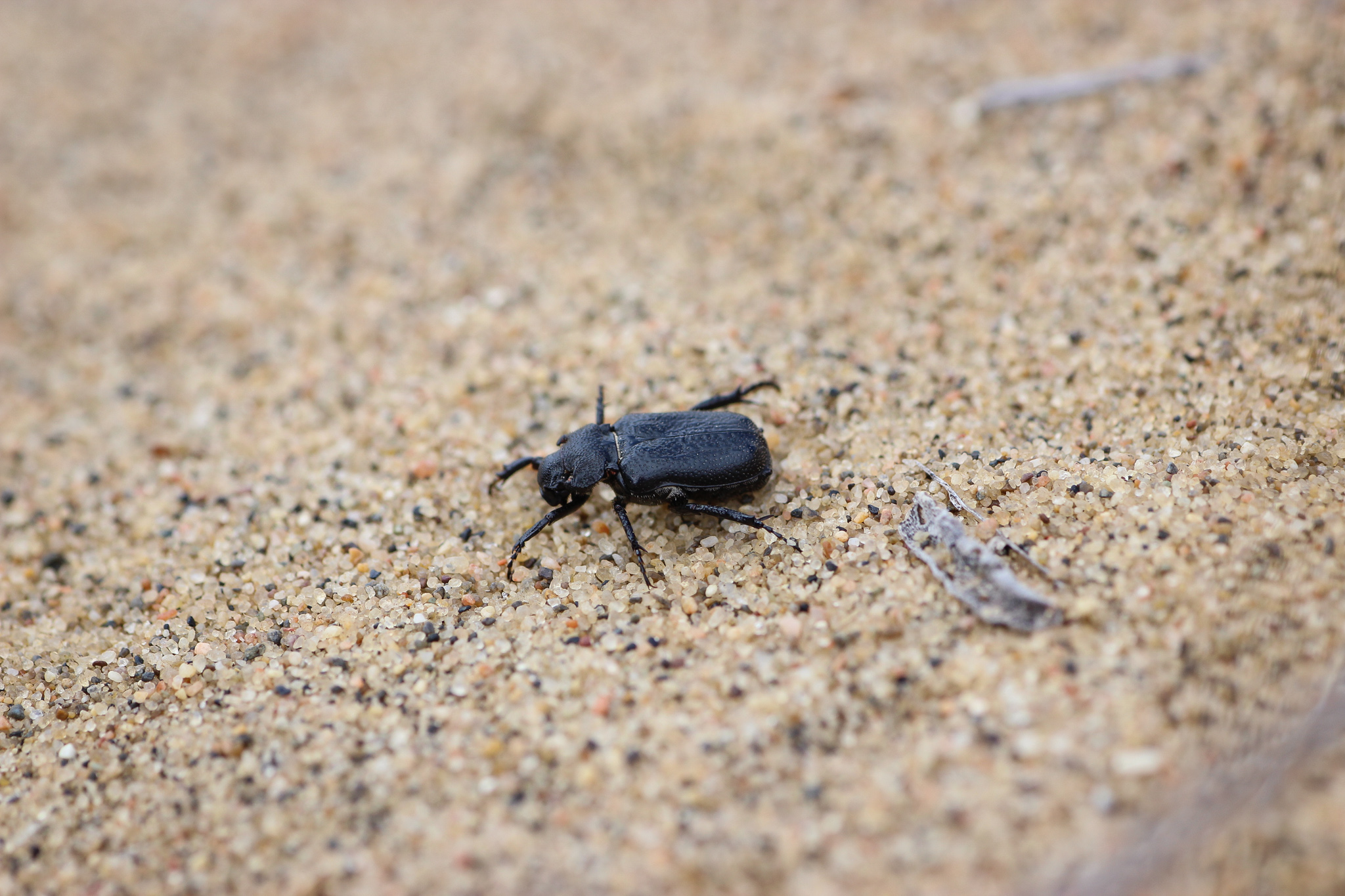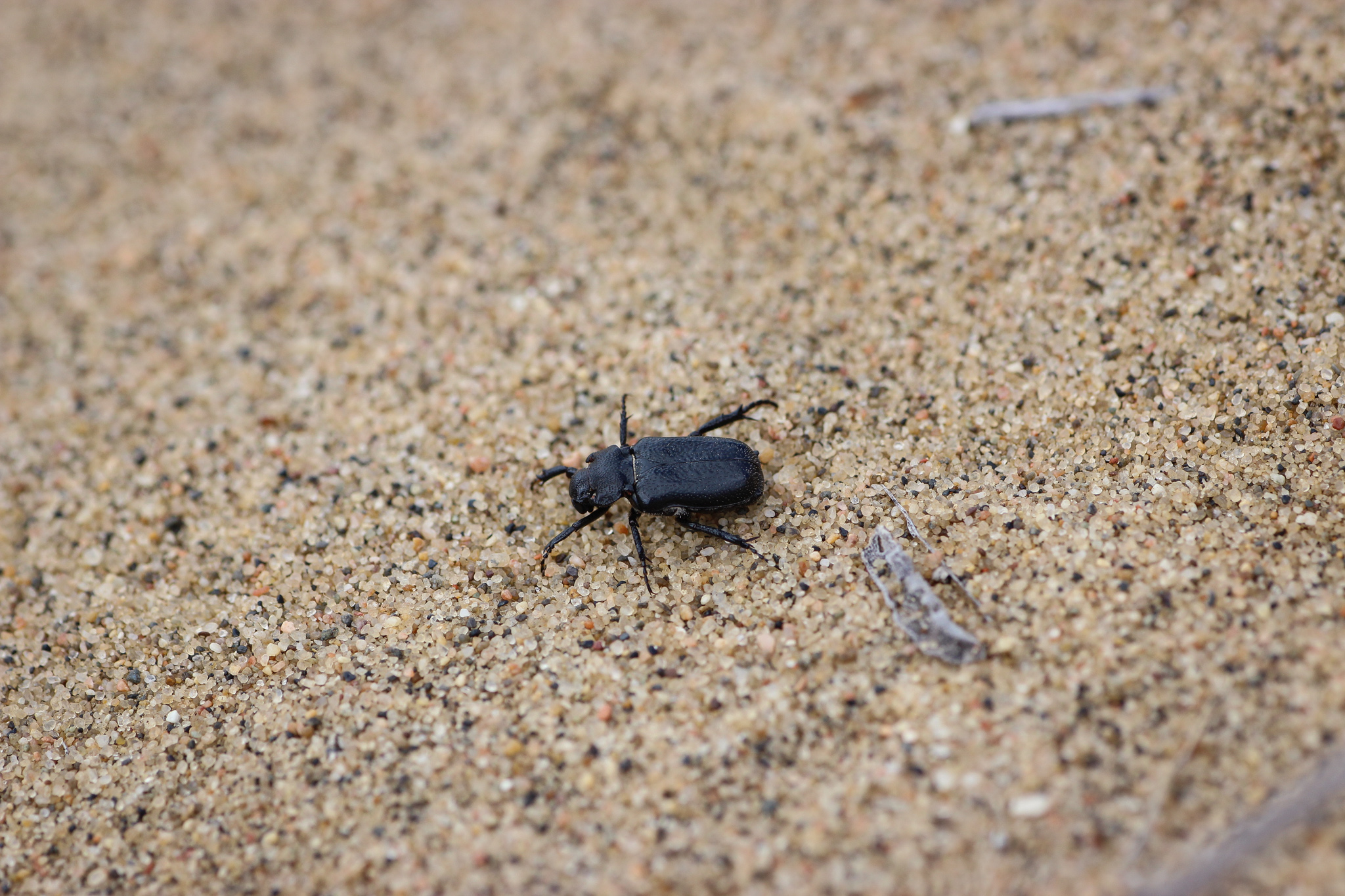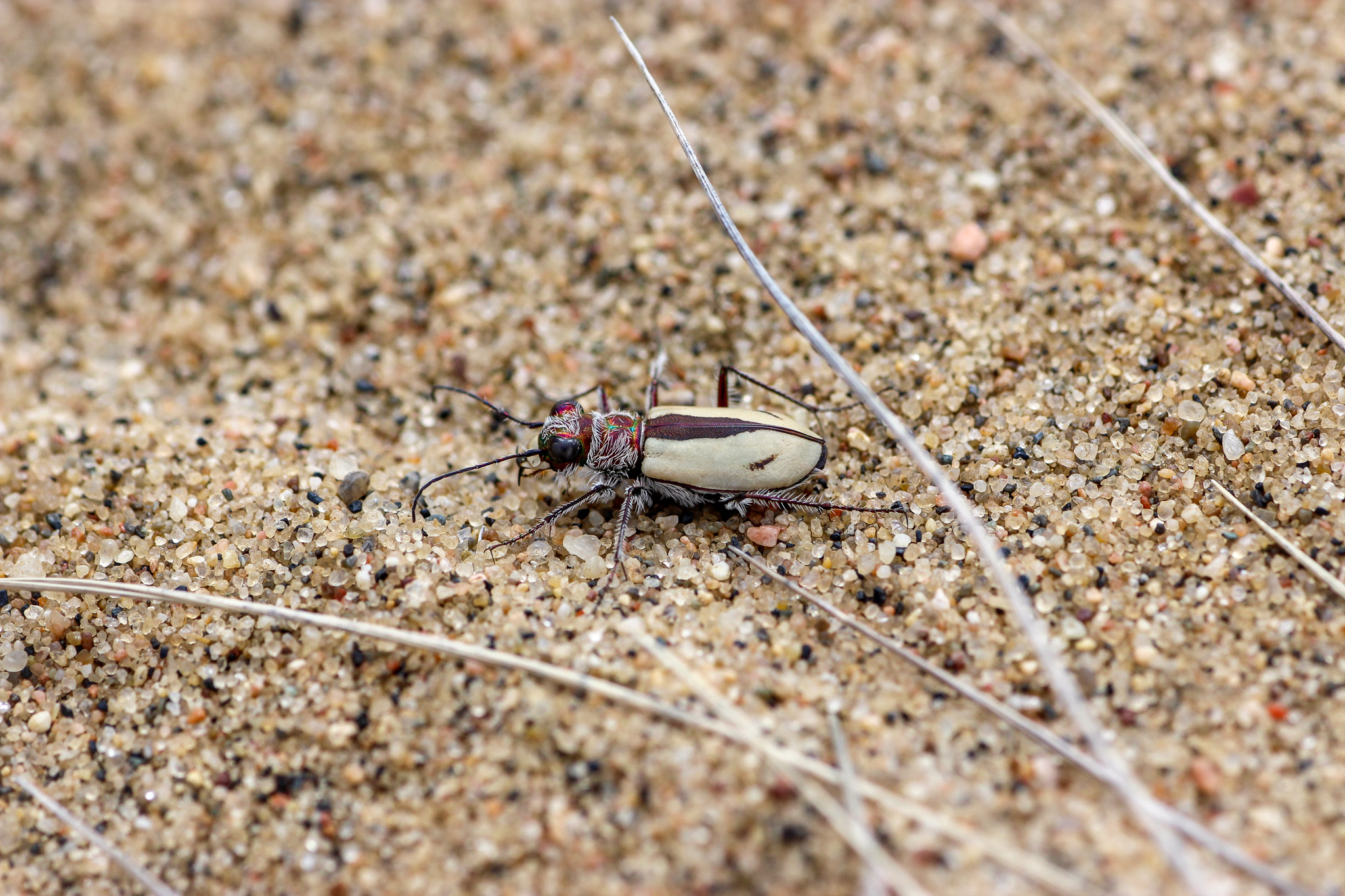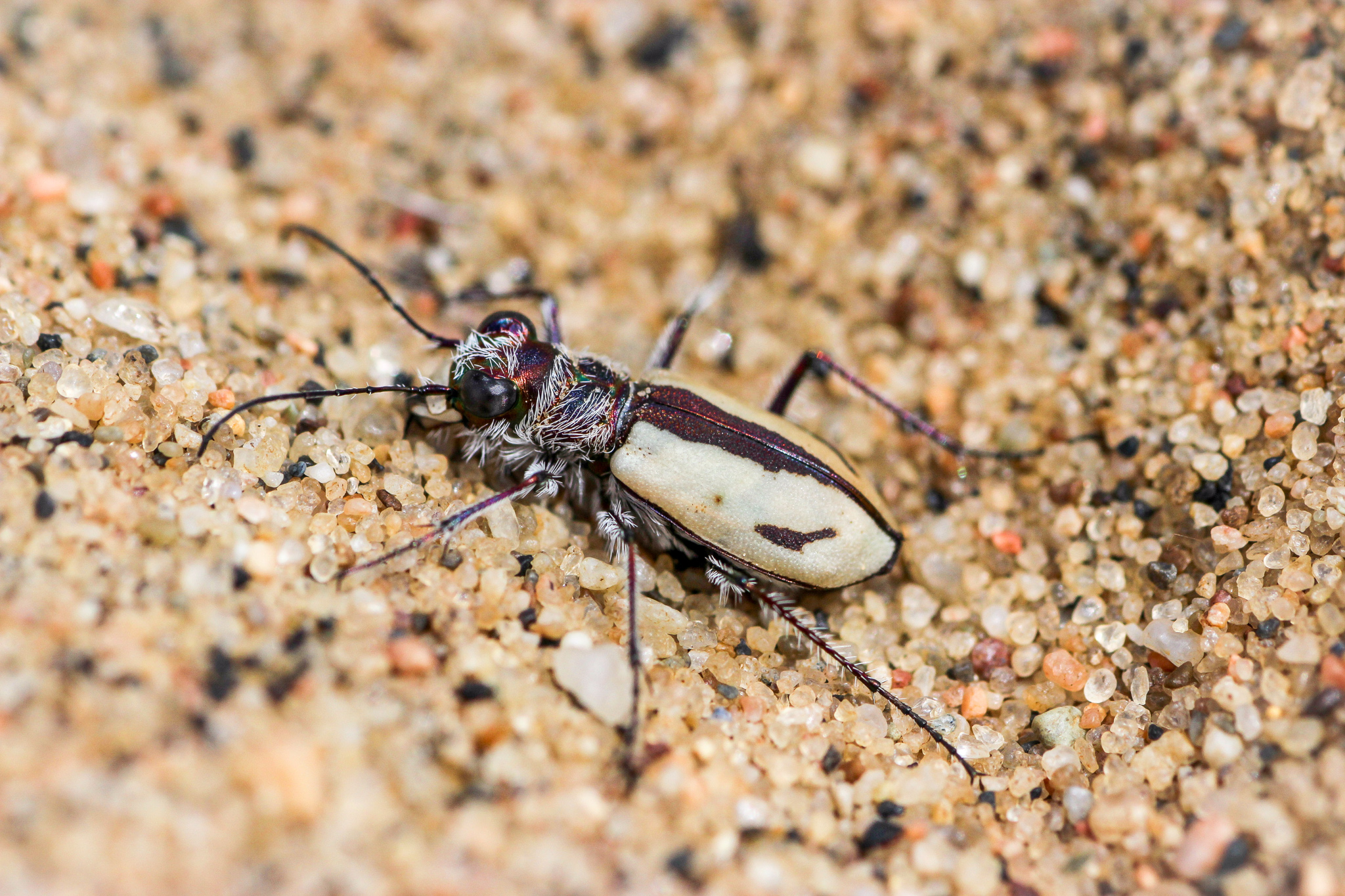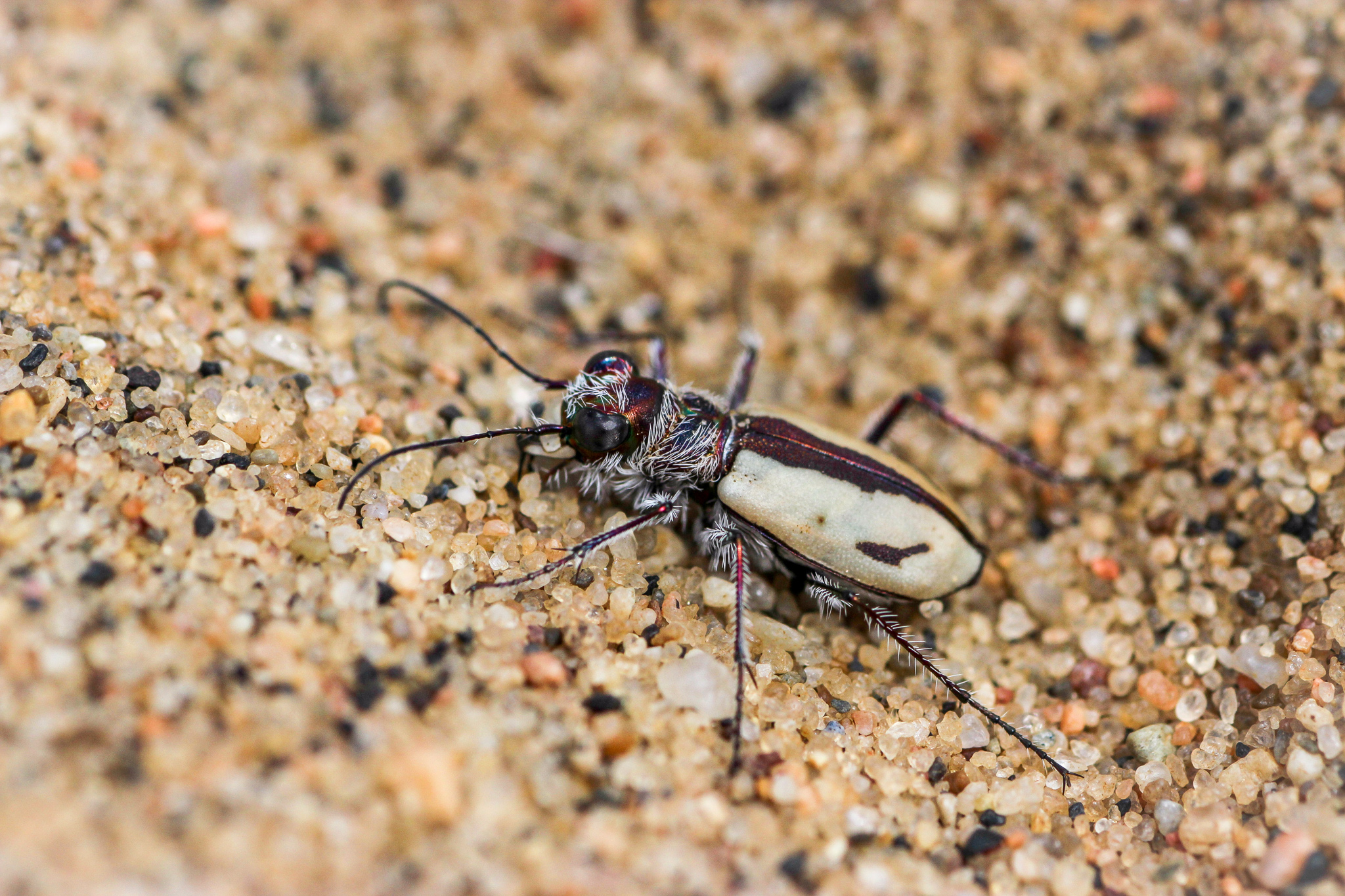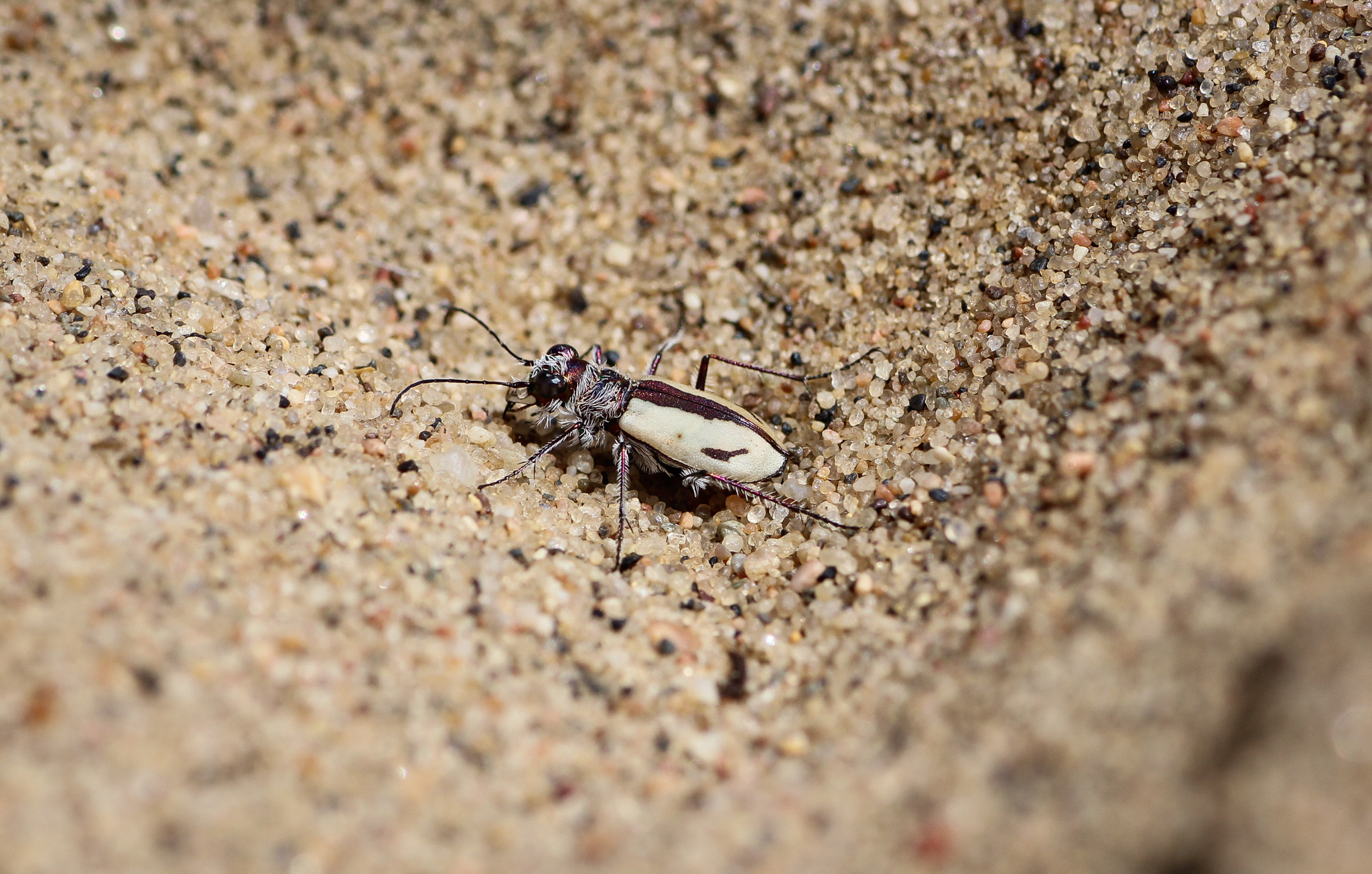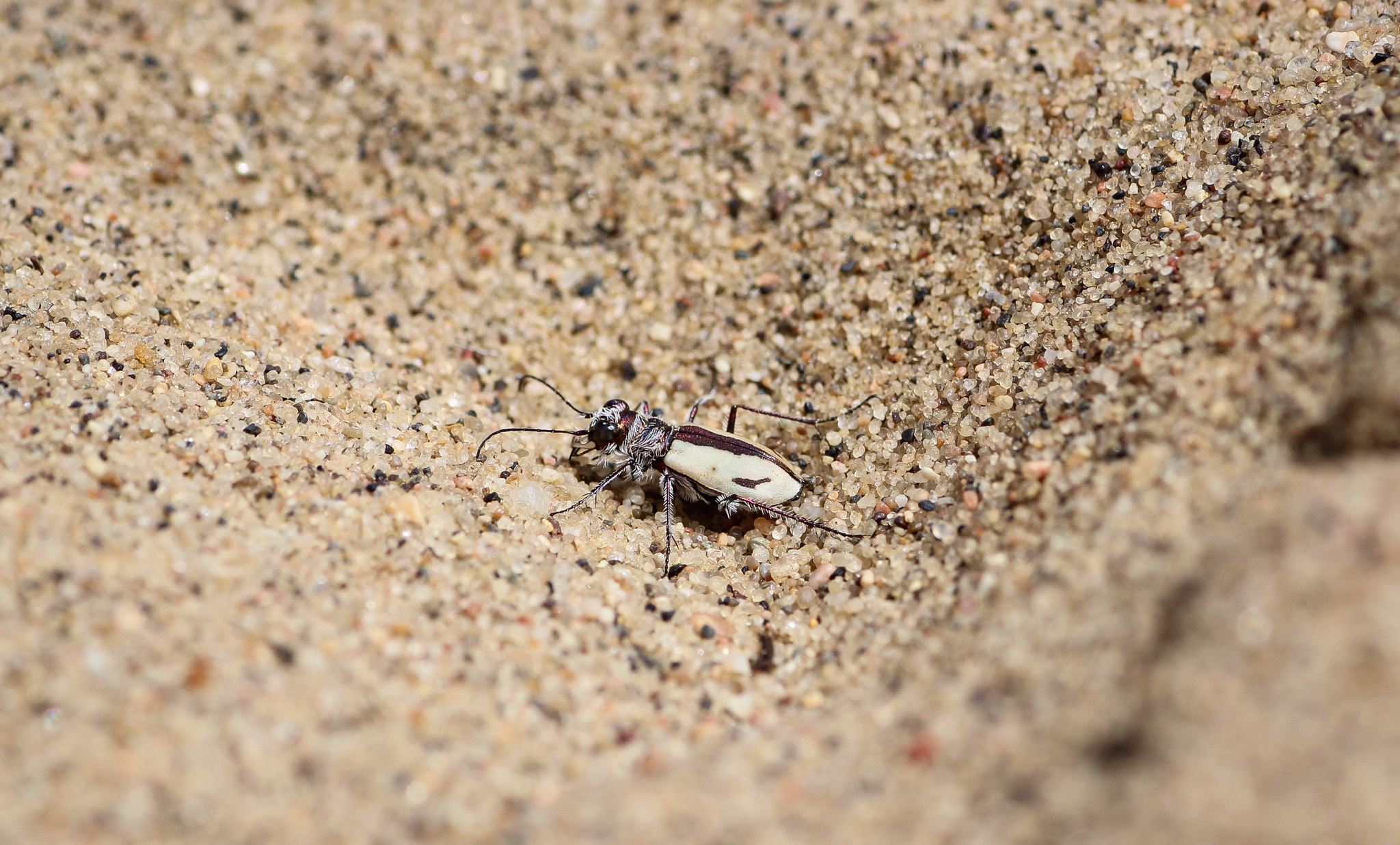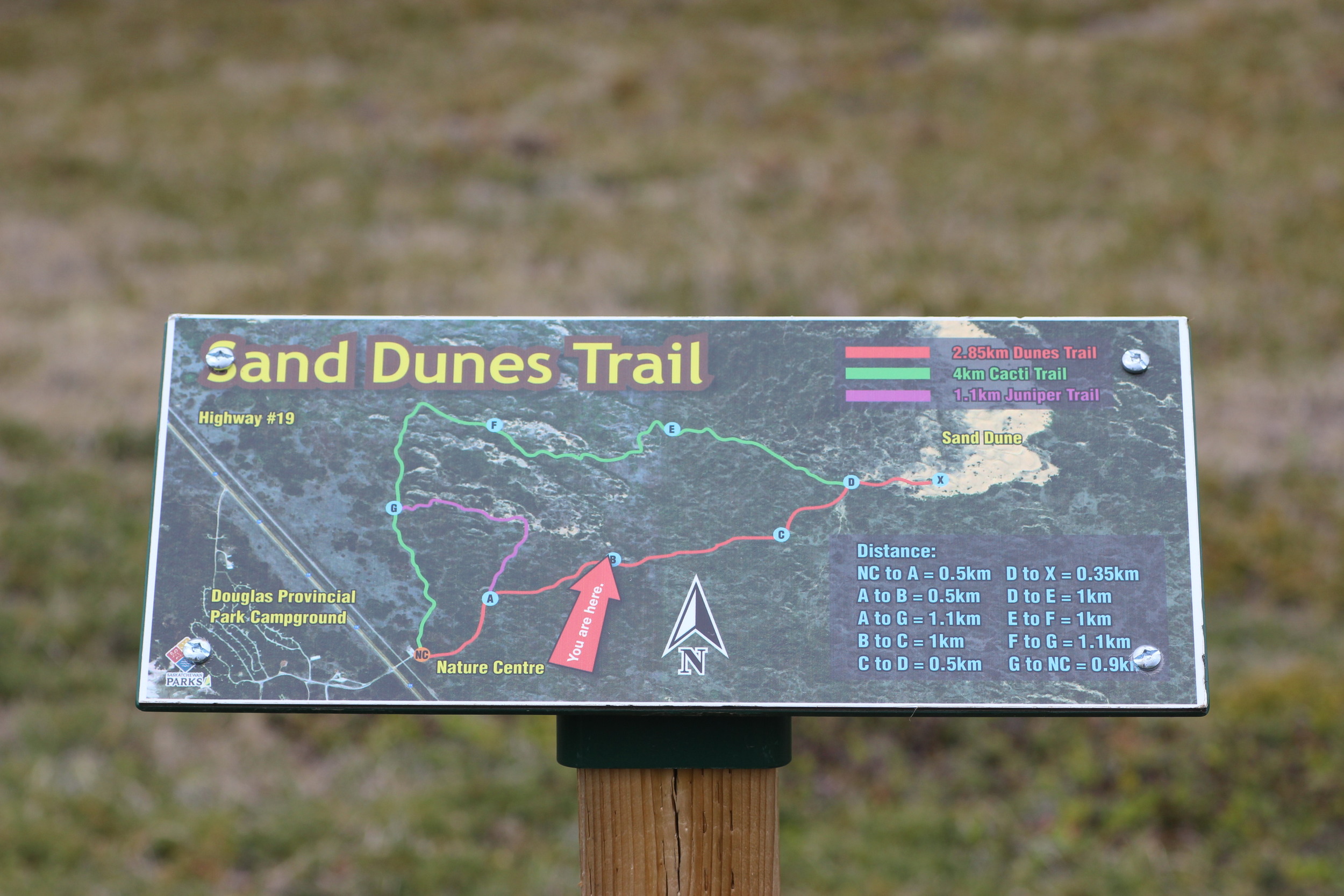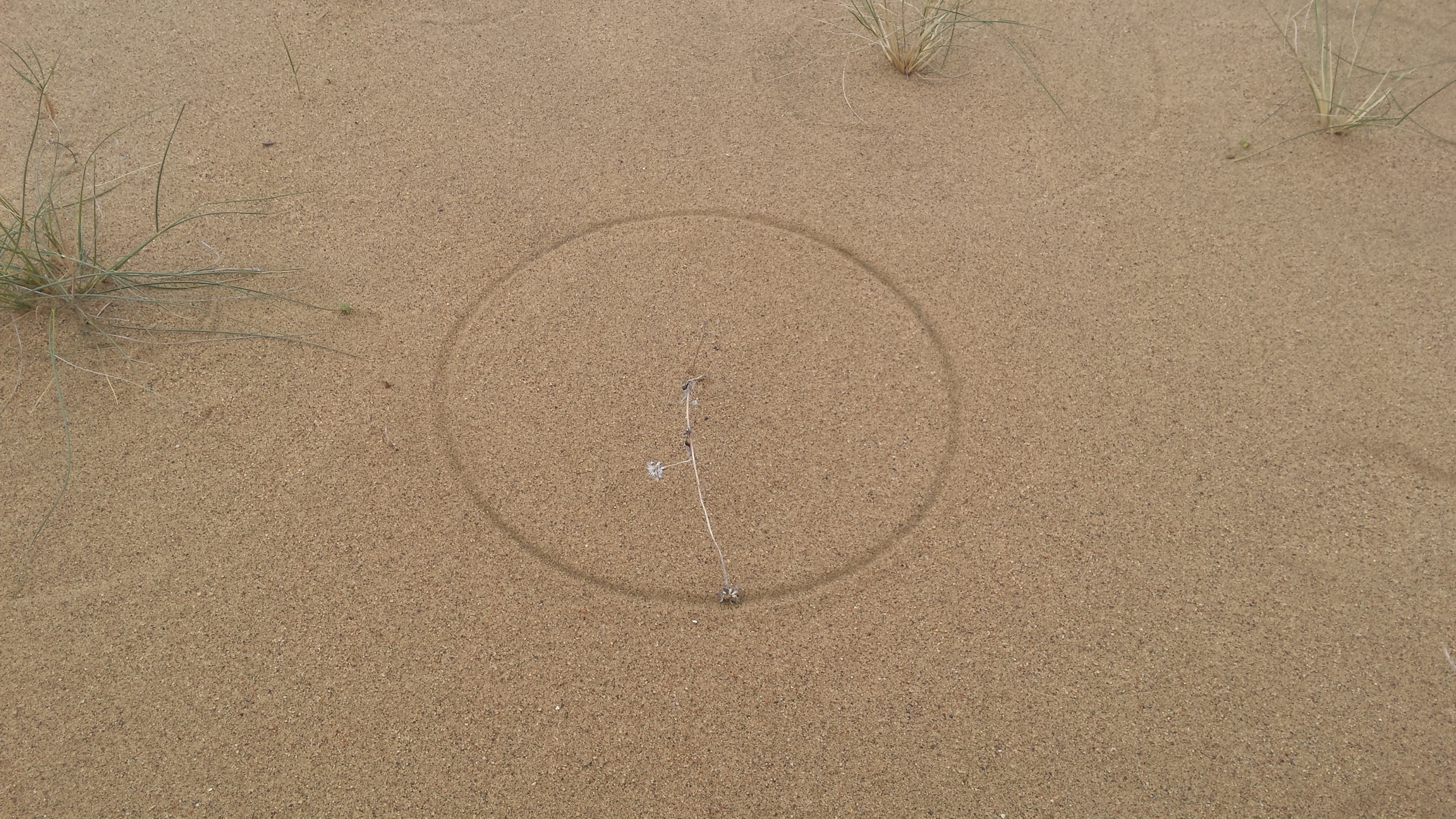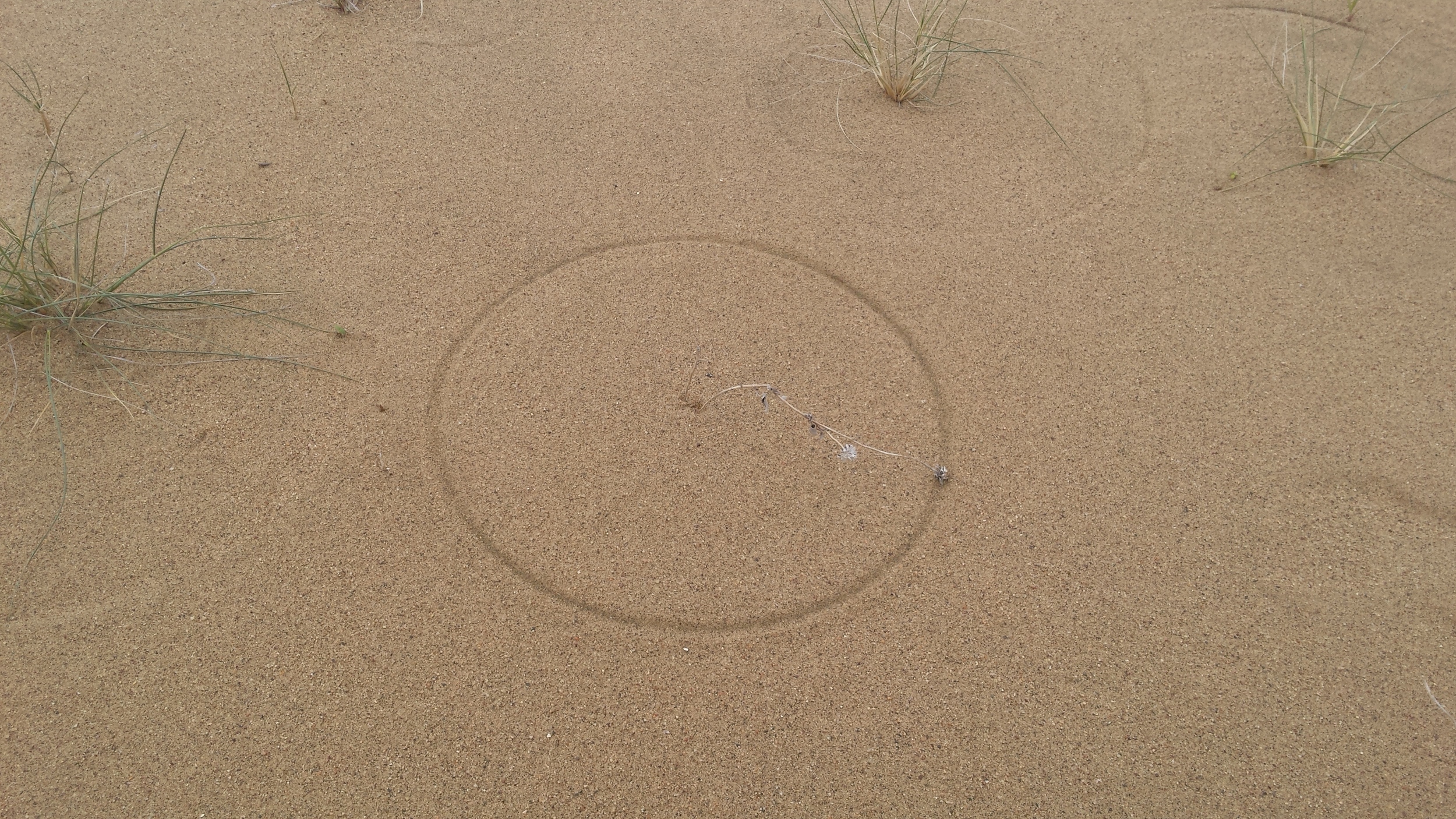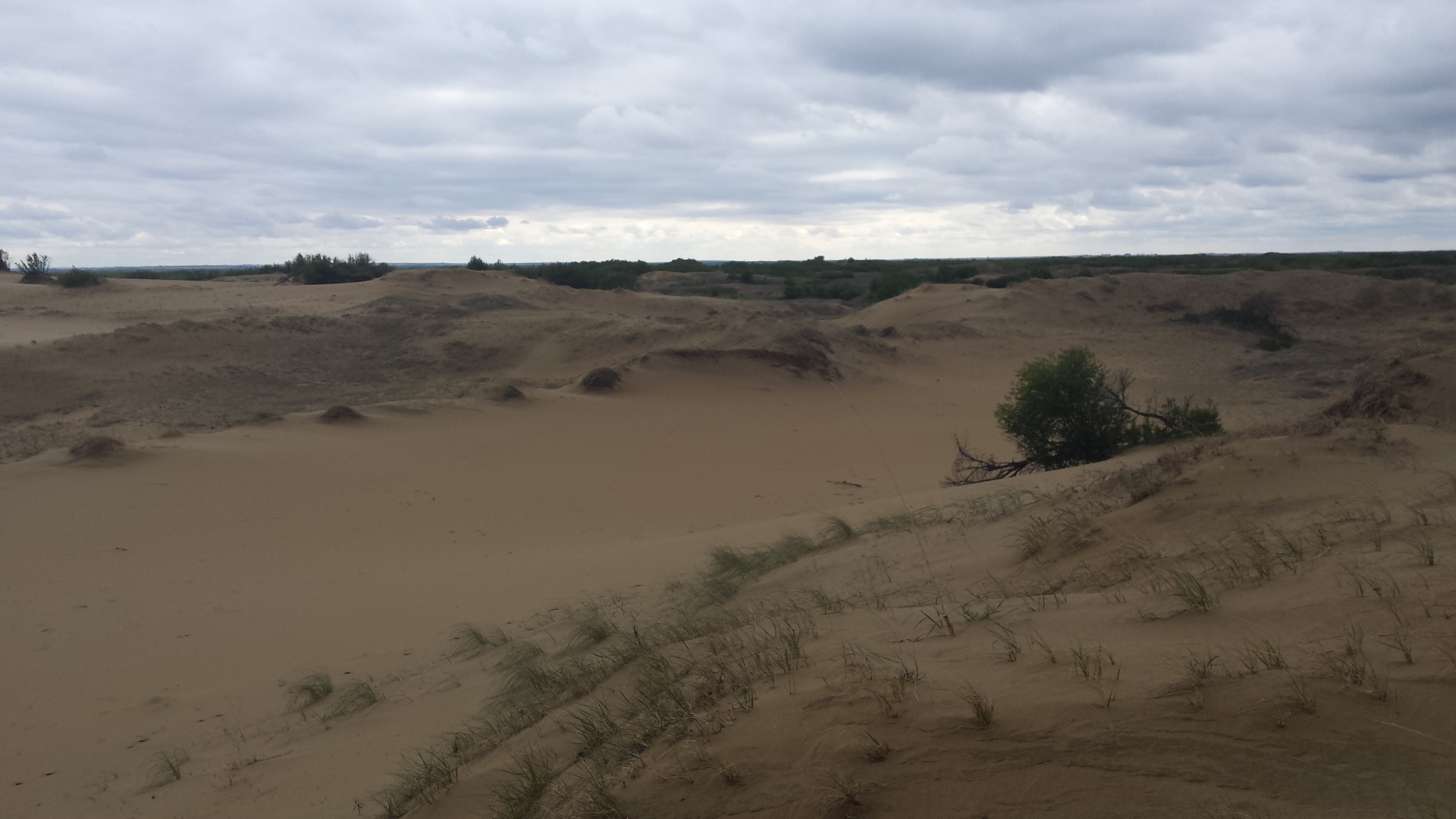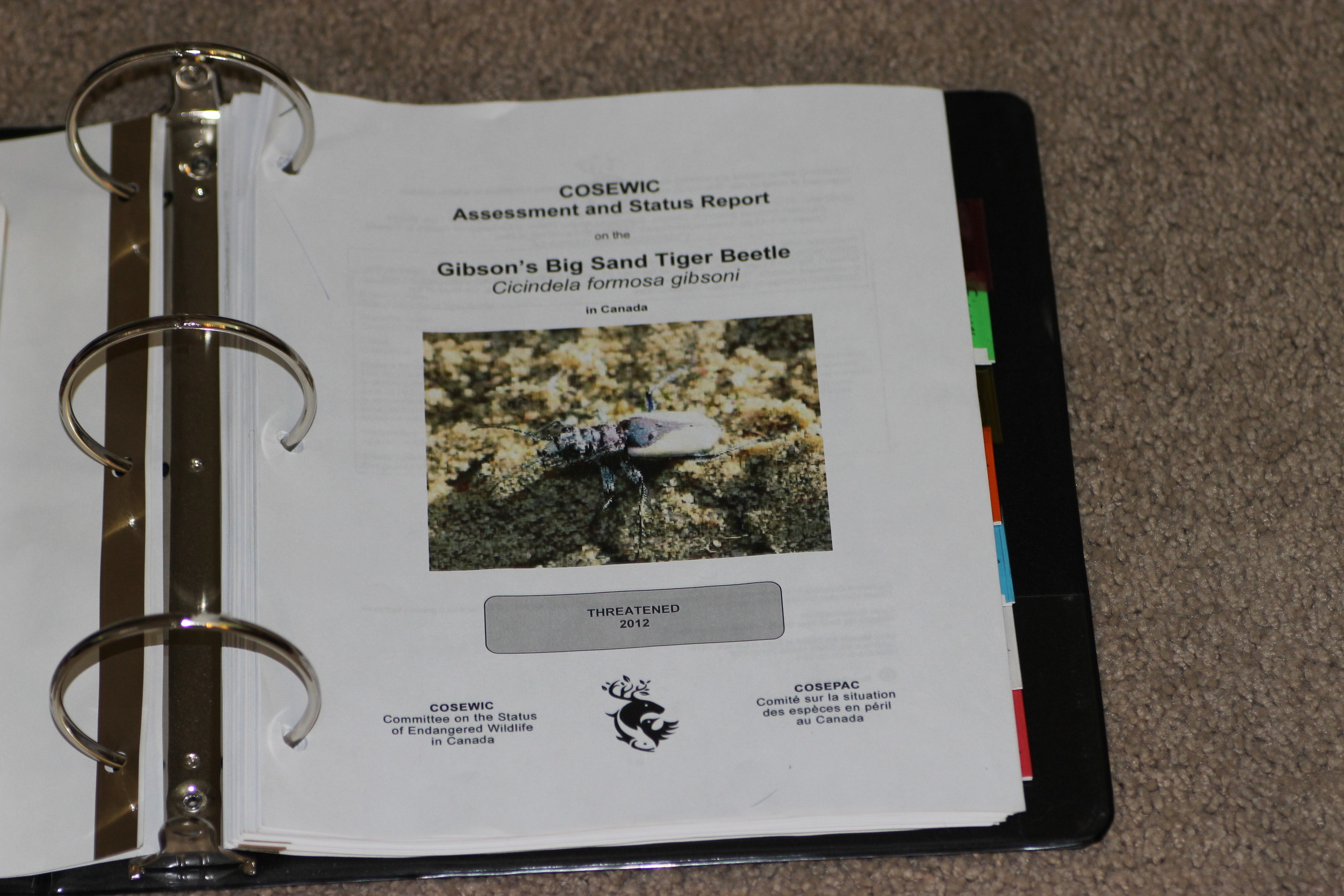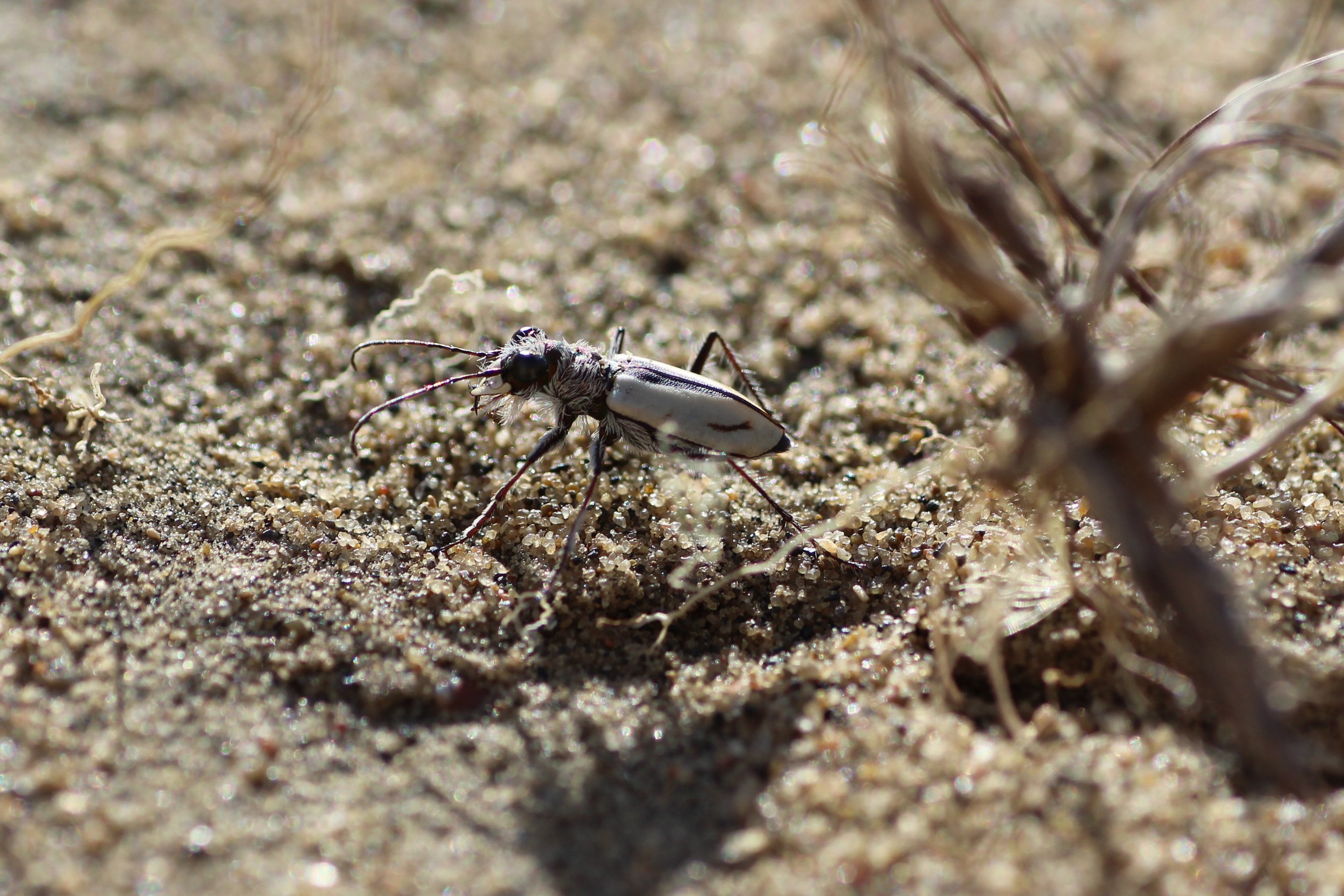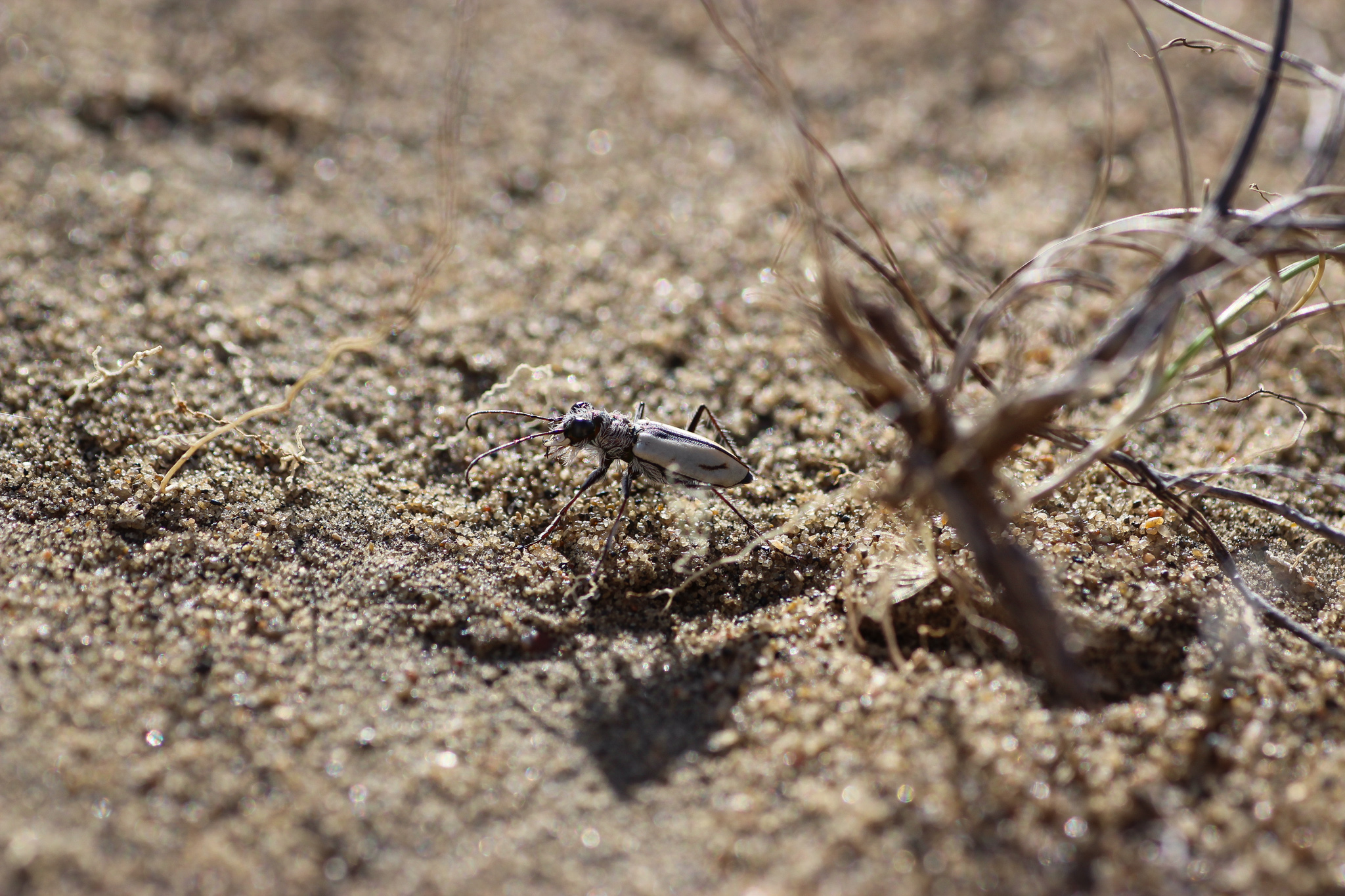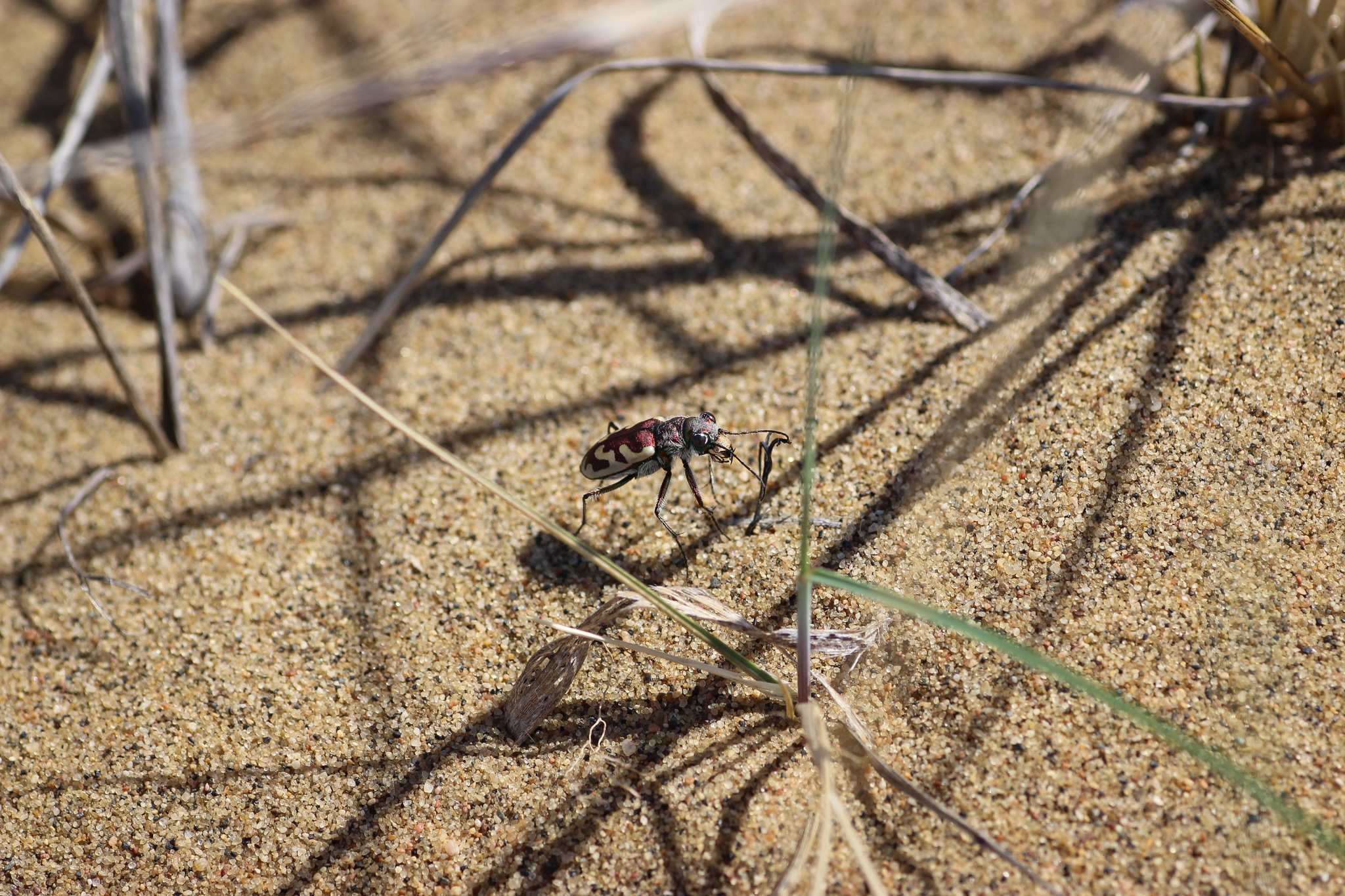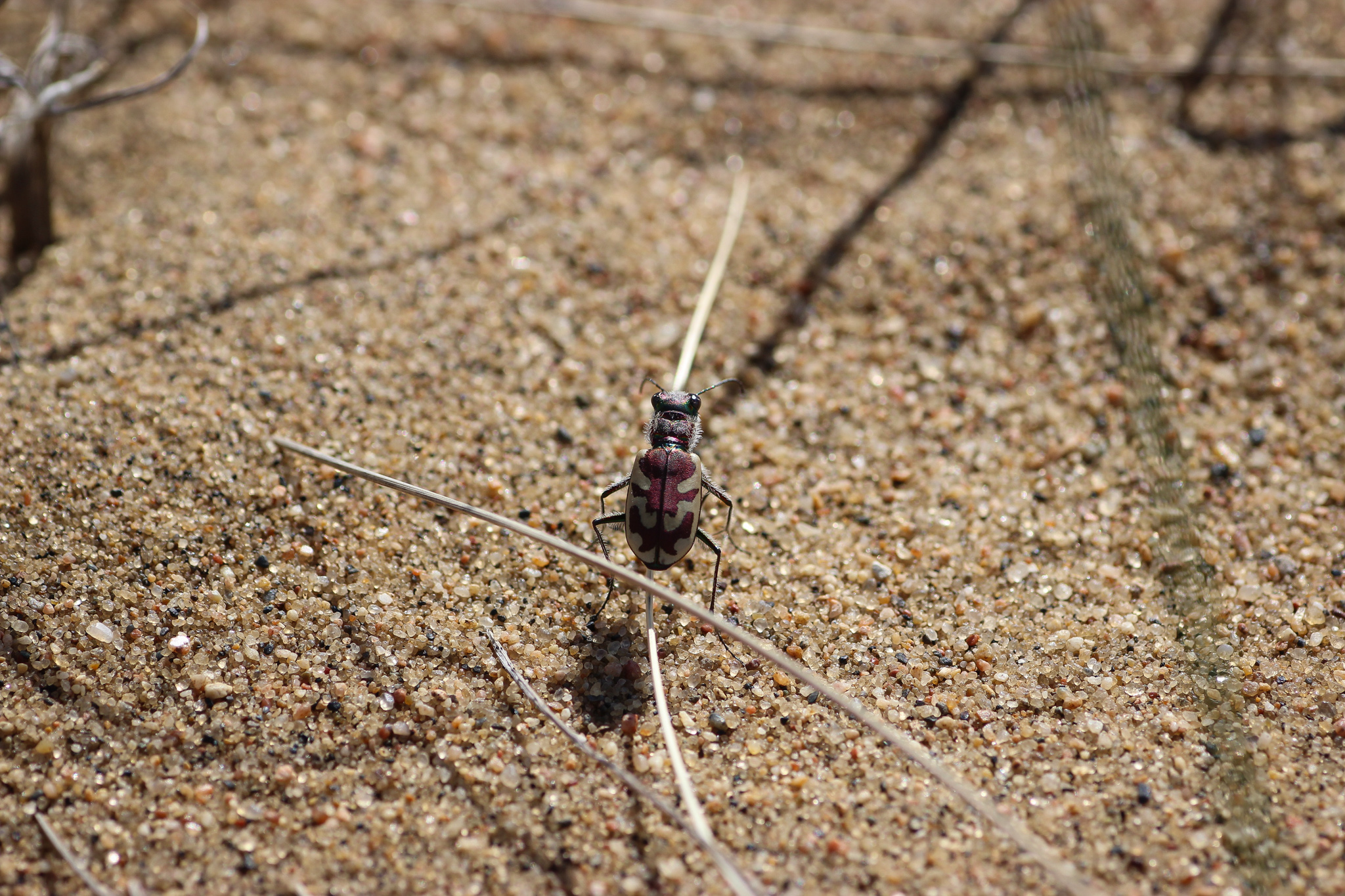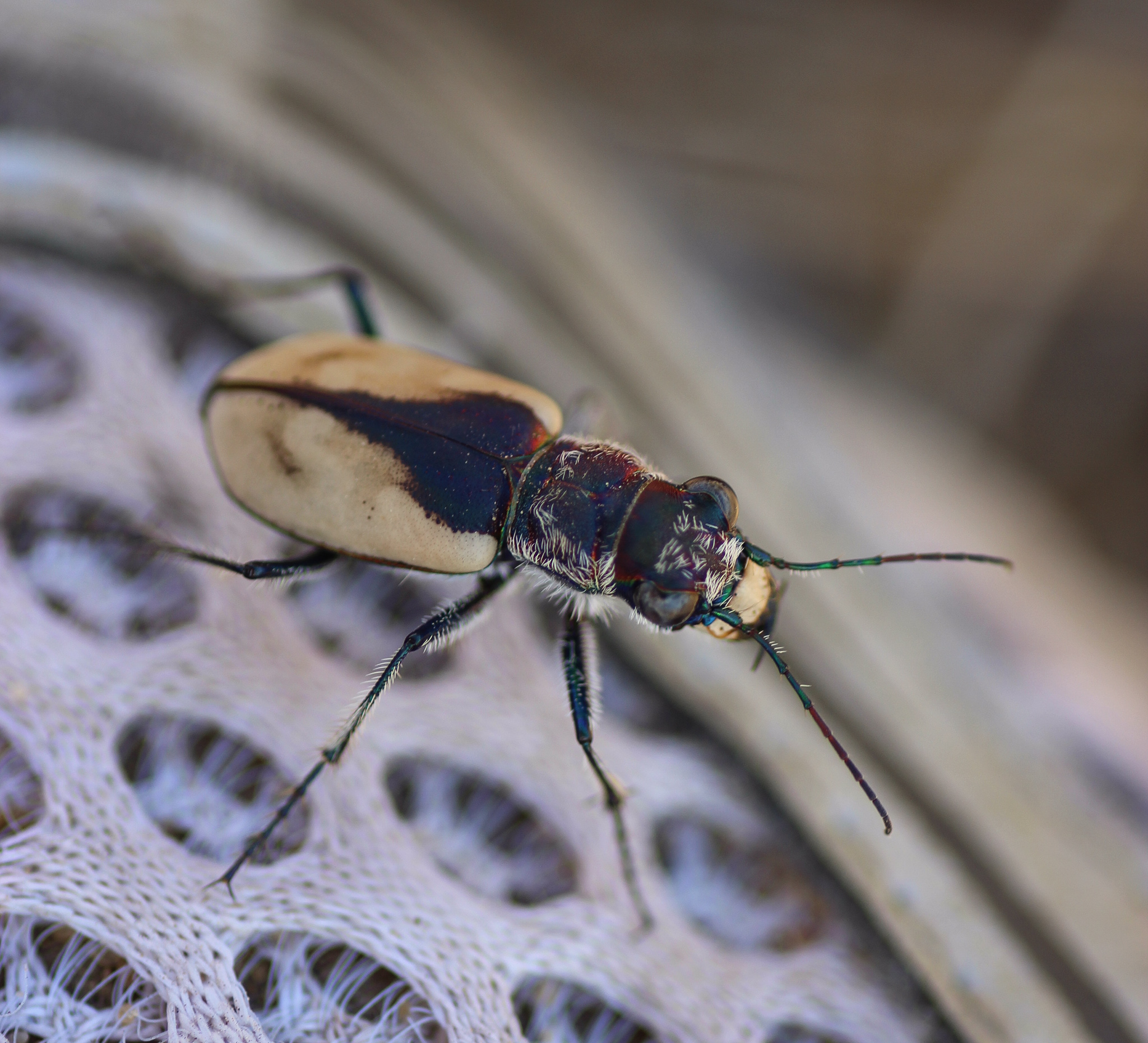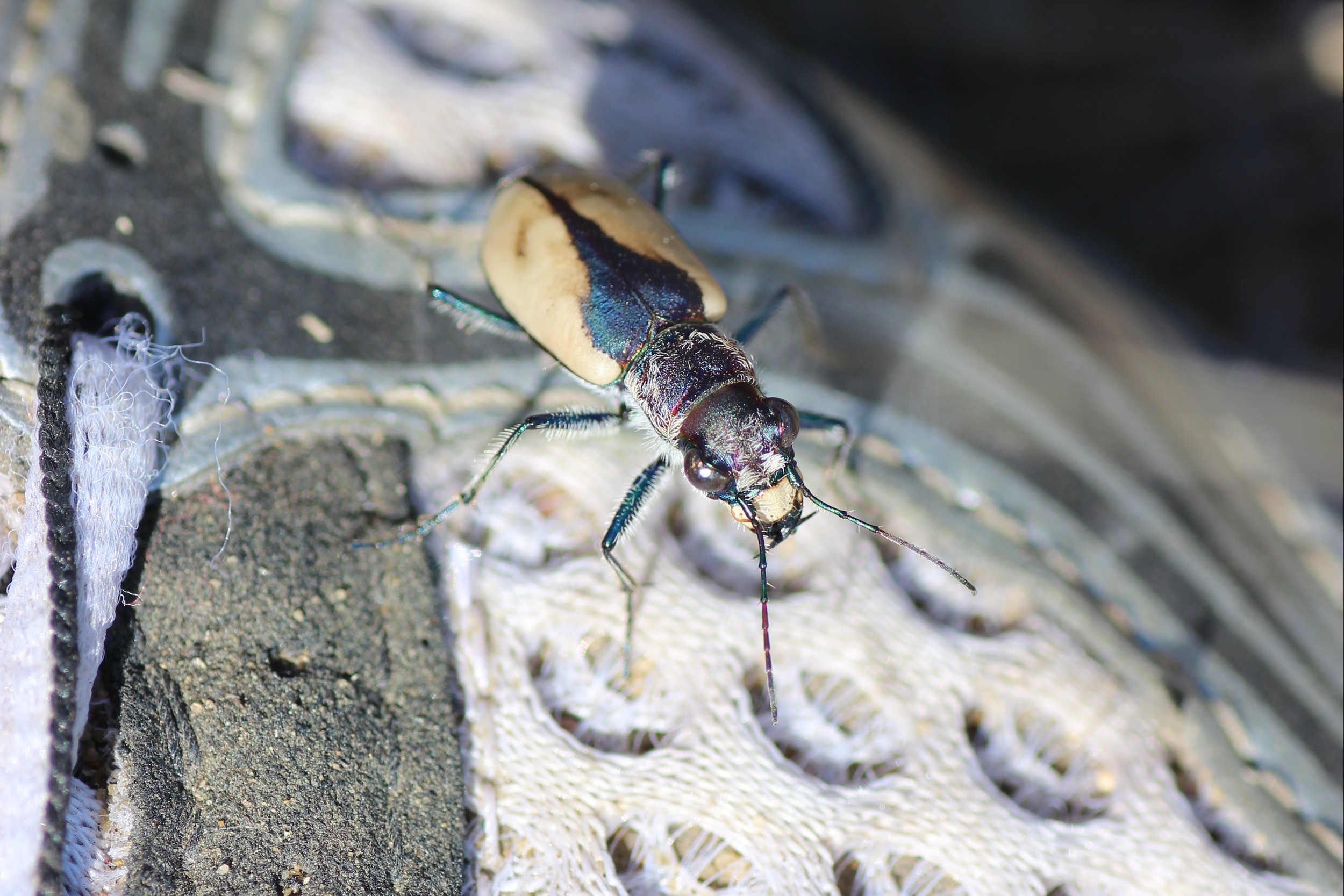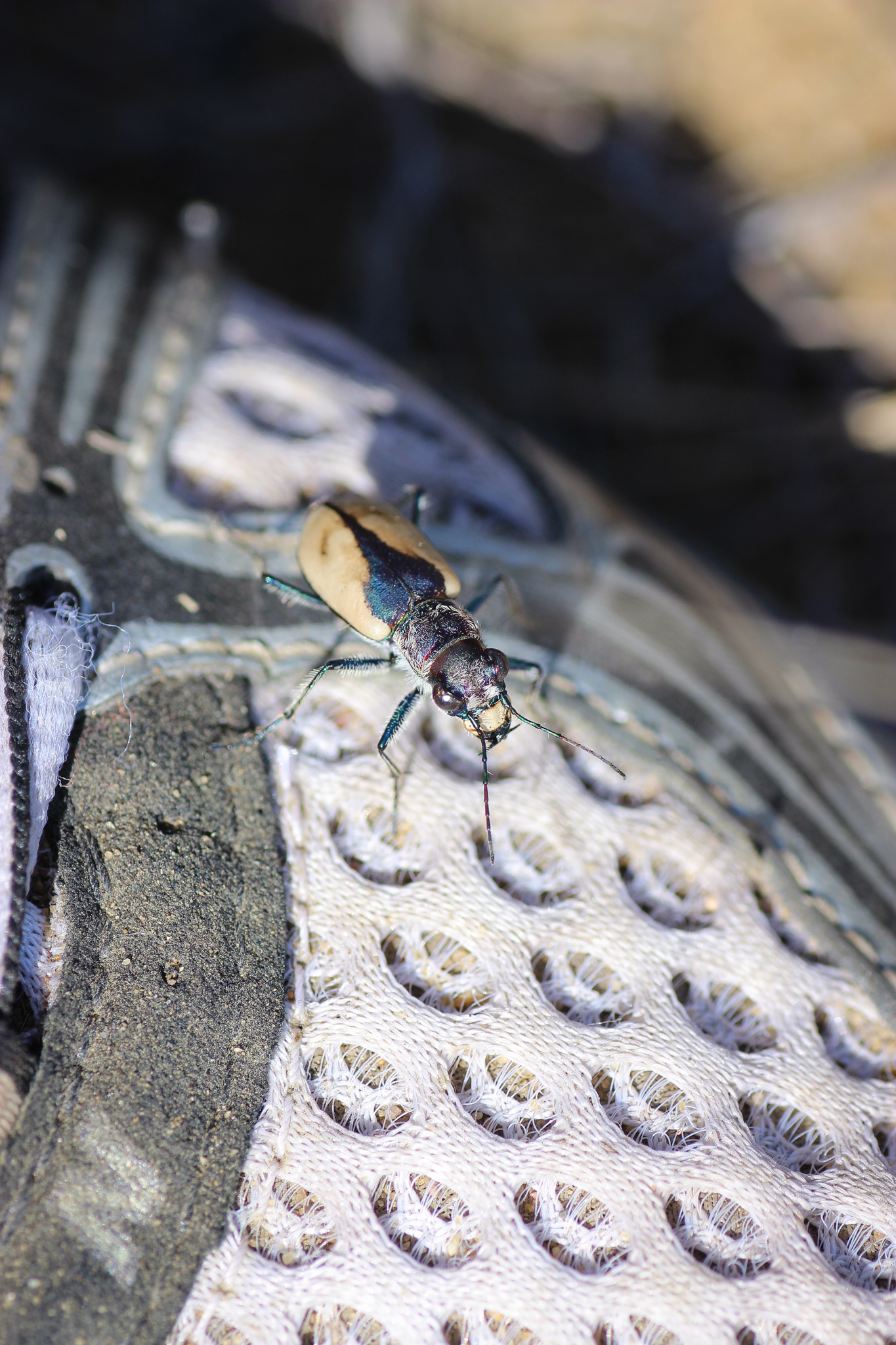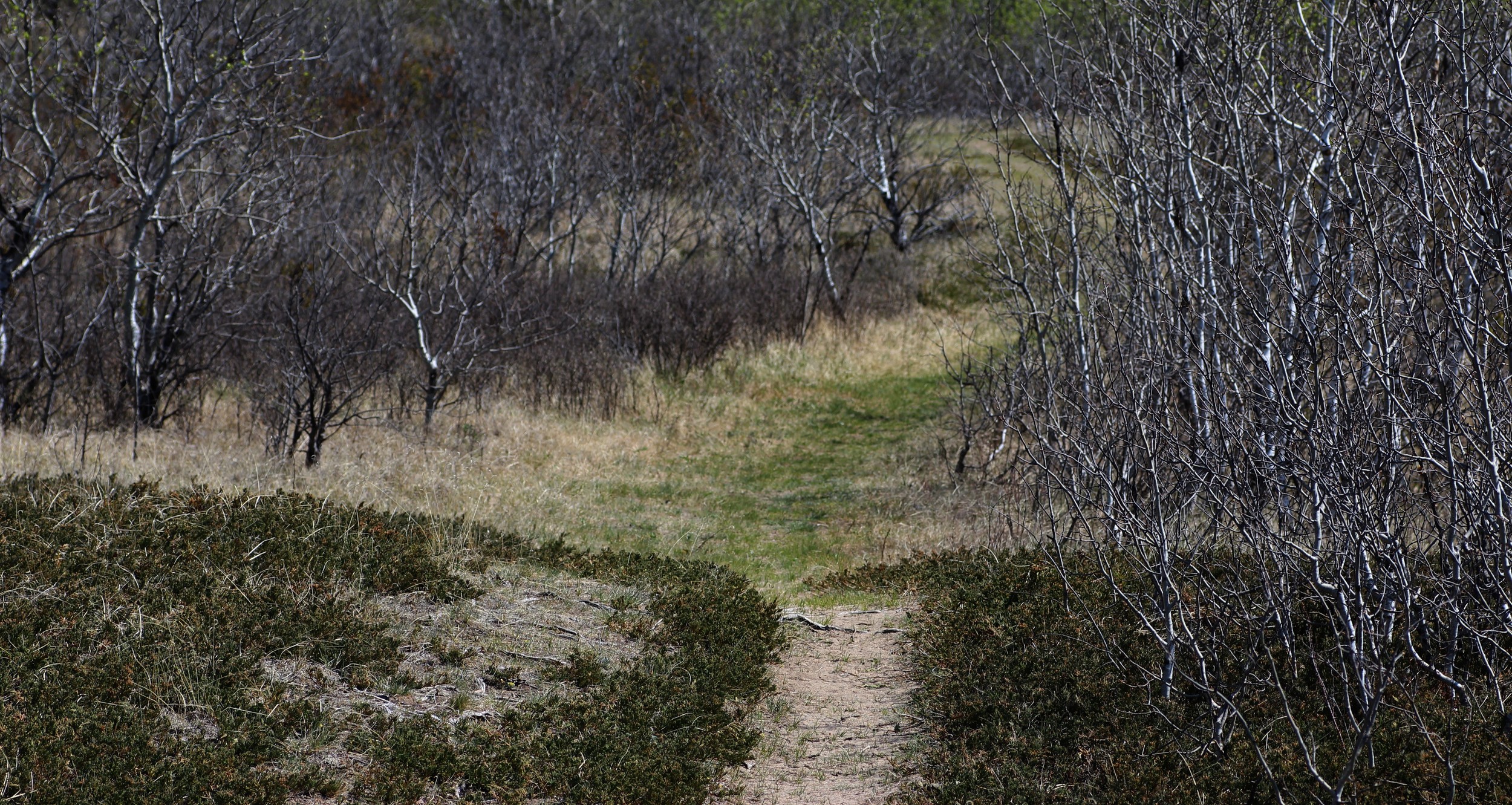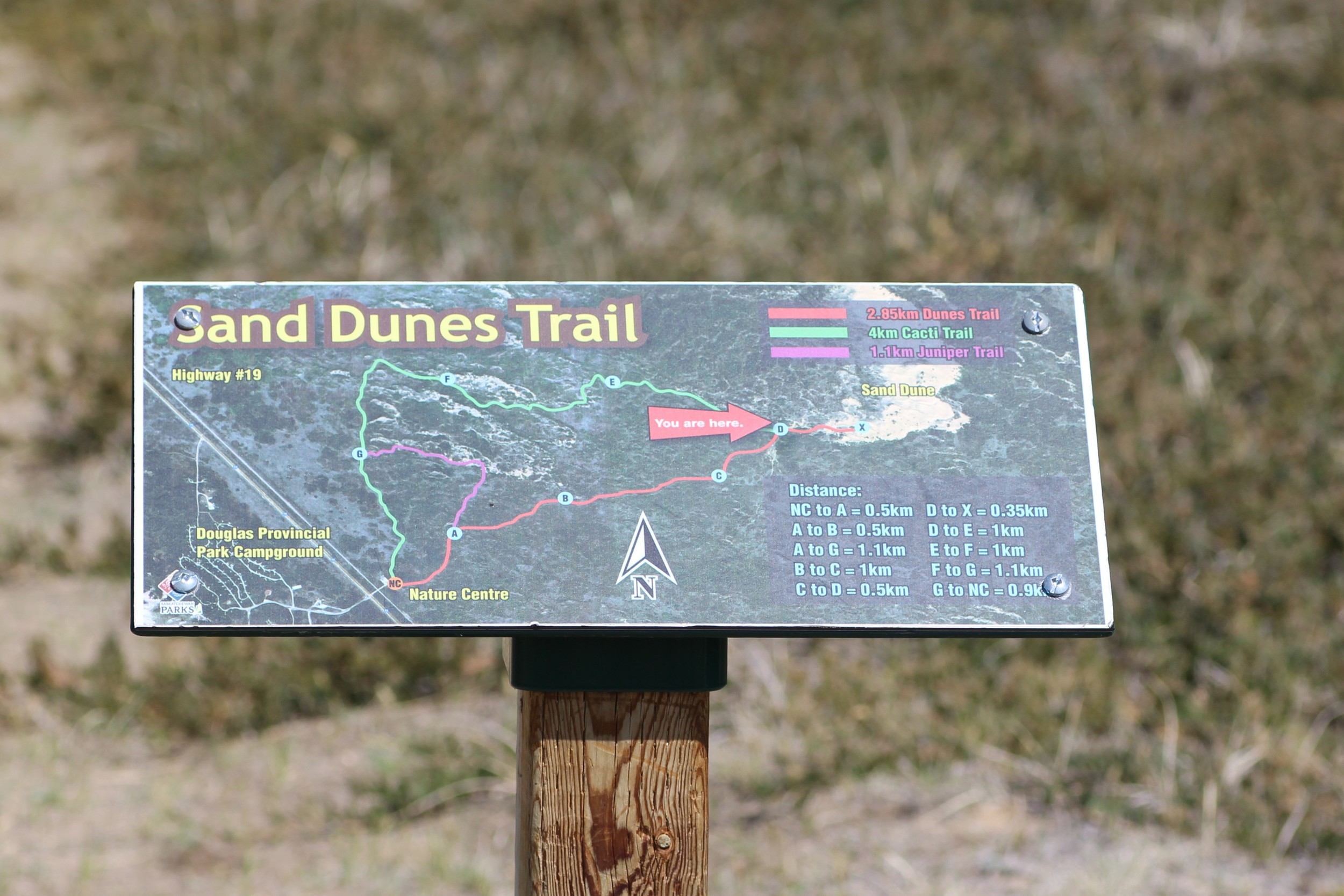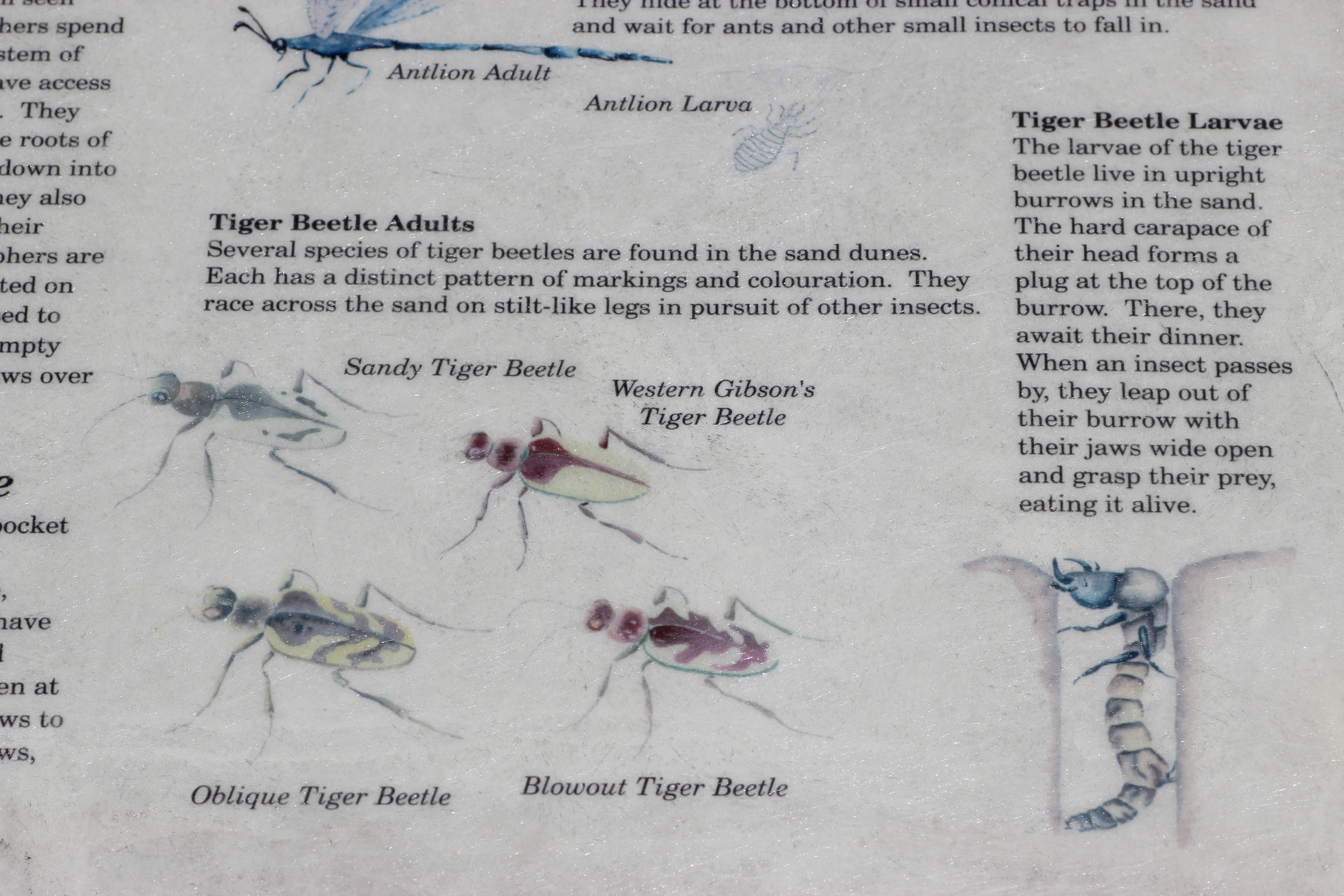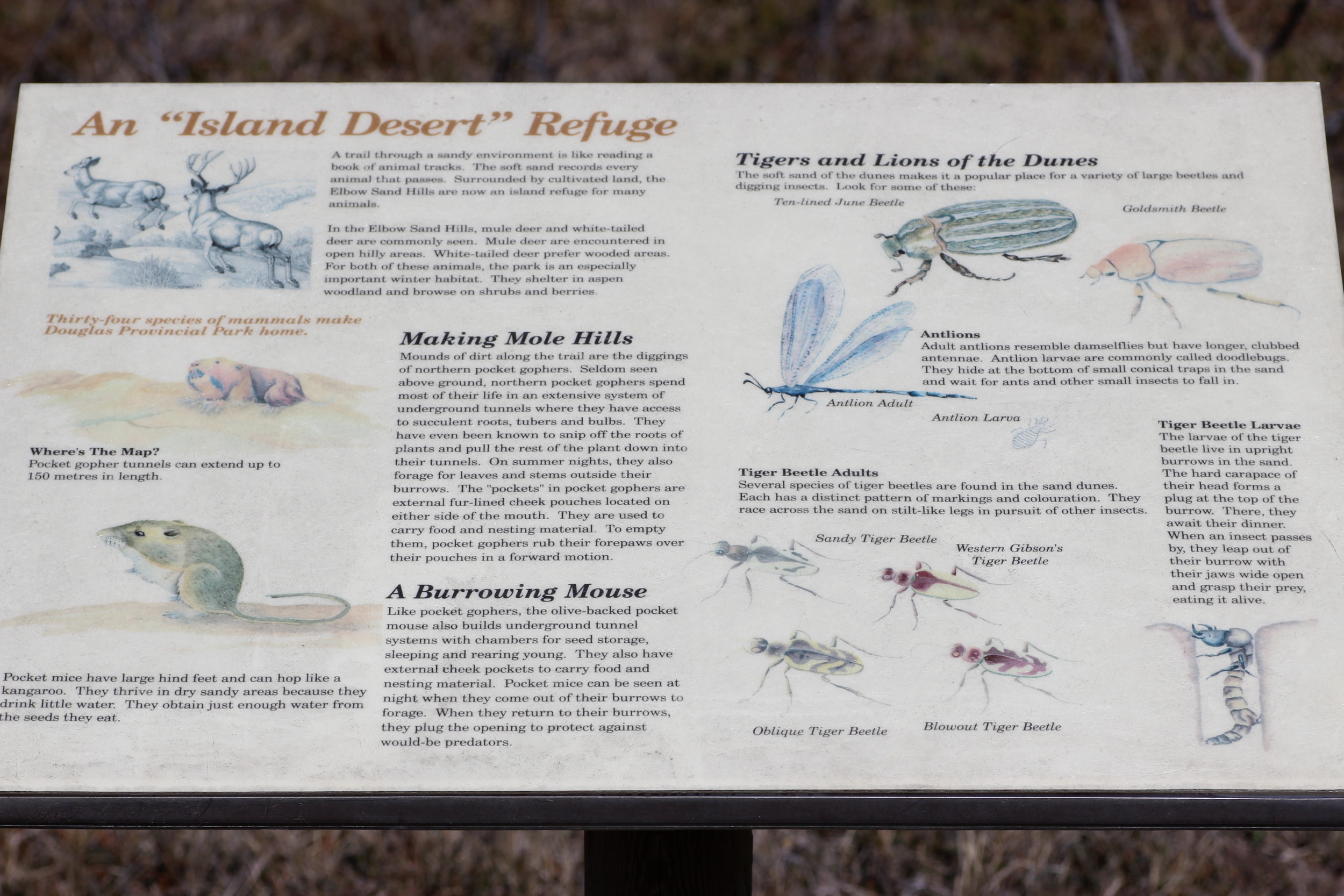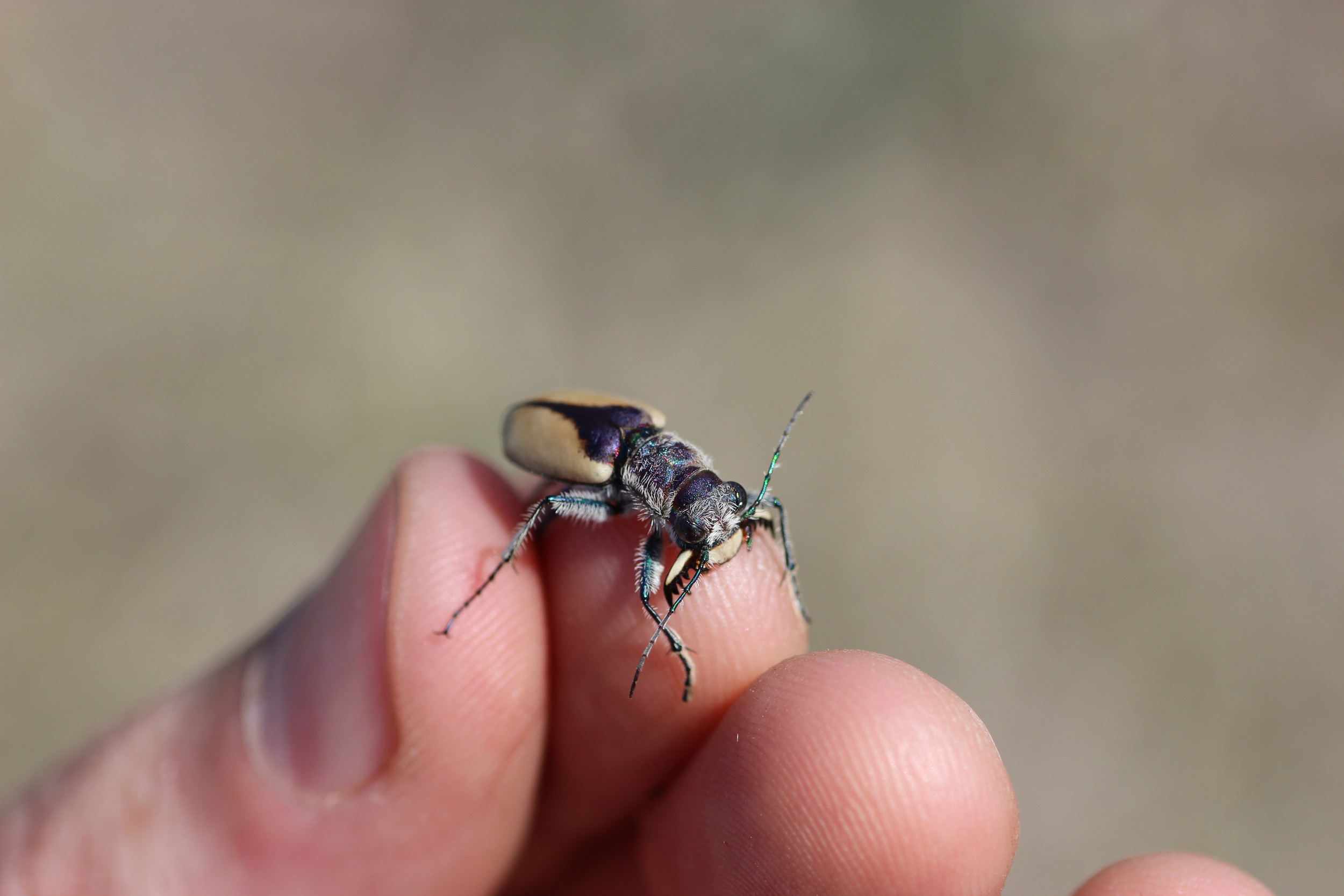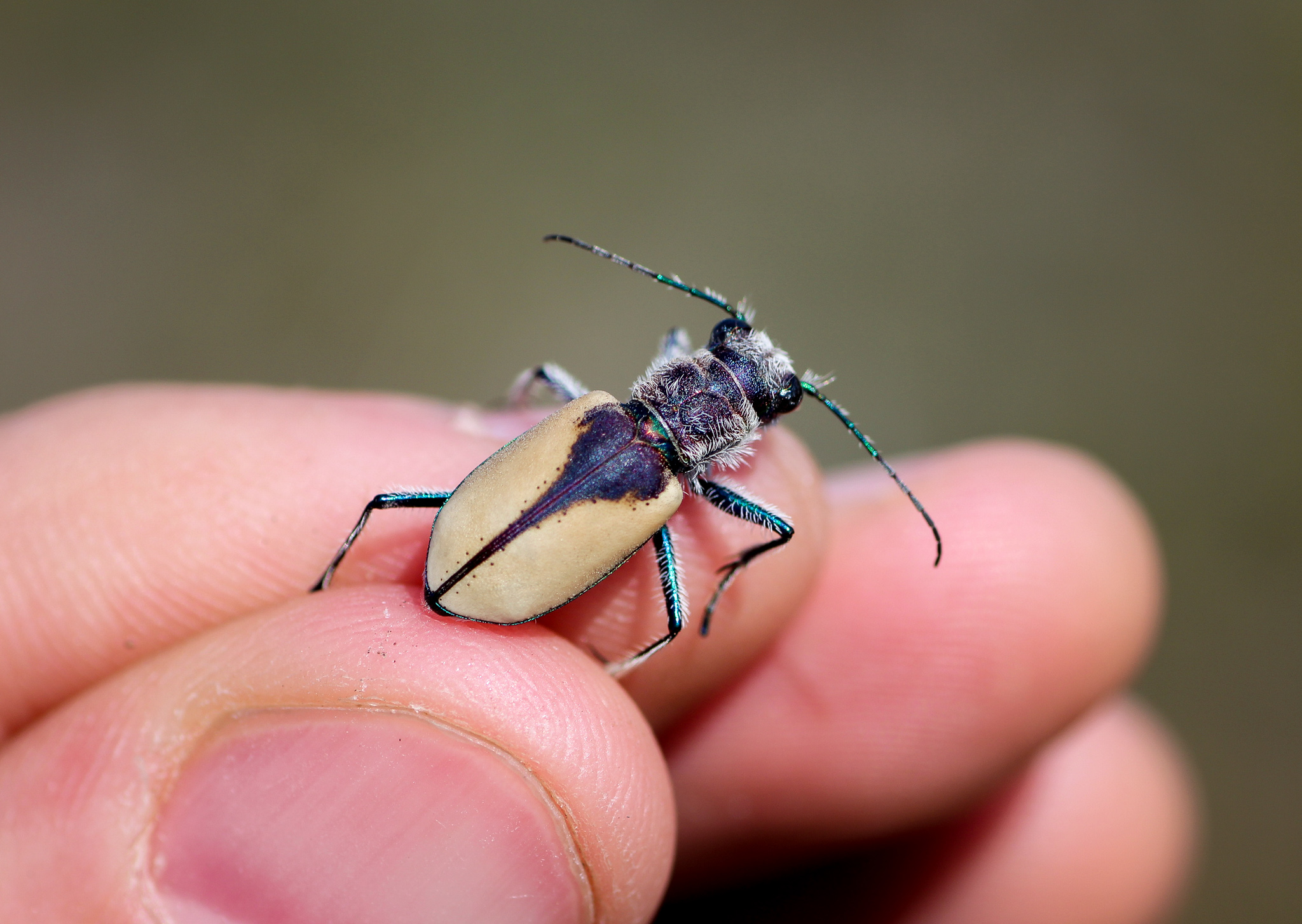This project is led by Aaron Bell and Kiara Calladine
The Canadian Sand Hills are major hot spots of biodiversity in Canada. Where there was once, vast, rolling mounds of sand drifting across the landscape, there is now mostly stabilized dune fields, with occasional patches of 'moving' sand. The major threat to these habitats is ongoing dune stabilization, which occurs when vegetation provides the structural support to trap sand and prevents it from blowing away. For Gibson's Big Sand Tiger Beetle and other sand specialists inhabiting active dunes, stabilization poses a major threat because their already limited habitat area is reduced even further.
Fig 1. East side of the 31 hectare dune complex in the Douglas Provincial Park, near the town of Elbow, Saskatchewan.
Gibson’s Big Sand Tiger Beetle was listed as ‘Threatened’ under the Species at Risk Act on February 21, 20181. Compounding the threat of dune stabilization and habitat loss is the lack of baseline knowledge for Gibson's. Currently, population numbers are unknown and less than a quarter of historical collection sites have been confirmed since initial assessment. In 2016, Troutreach initiated a study to address this knowledge gap, specifically focusing on the Douglas Provincial Park subpopulation.
Fig 2. Boundaries (black dotted line) and sampling area (white arrows) of an inter-dunal 'swale'
To conduct our population study, we organized the larger dune complex into 50 inter-dunal swales whose boundaries were delineated by natural features like dune crests, game trails, and vegetation (Figs 2 & 3). We then surveyed the population within each swale during peak reproductive activity from late-May to early-July and combined each swale estimate to get a total for the entire dune complex.
Fig 3. Google Earth image showing the boundaries of the 50 swales for which population estimates were conducted.
We found that the main dune complex supports a population of approximately 1000-1500 reproductive adults. Interestingly, the distribution of Gibson's within the dune complex is highly variable: some swales contain a significant proportion of the total population, while others support very few Gibson's. In general, Gibson's preferred habitat appears to be the semi-vegetated periphery and the central swales which significant vegetation cover (Fig 4).
Fig 4. Approximate location of Gibsons collected during the population survey in 2016.
Continued study of Gibson's population in the Douglas Provincial Park will help determine how the population fluctuates over time and what abiotic factors (e.g., rainfall) influence population growth.
We would like to thank Saskatchewan Parks, especially the Douglas Provincial Park staff, for their ongoing support and hospitality throughout this conservation project.
Disclaimer
Information and any results or discussion listed on this page are preliminary and may based on modified data sets. Please contact us for more information.



